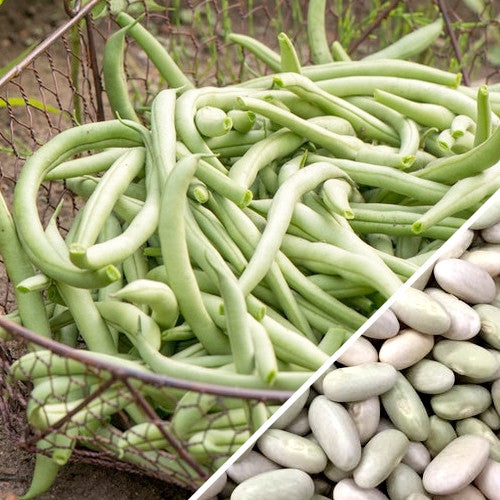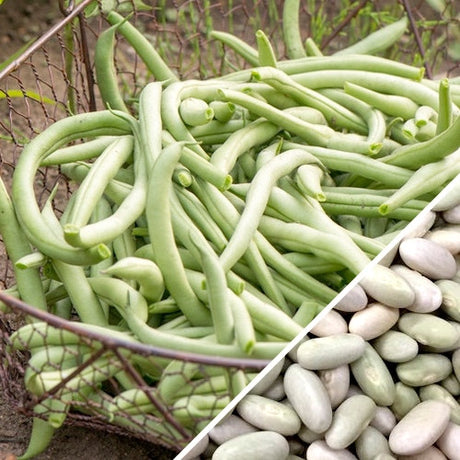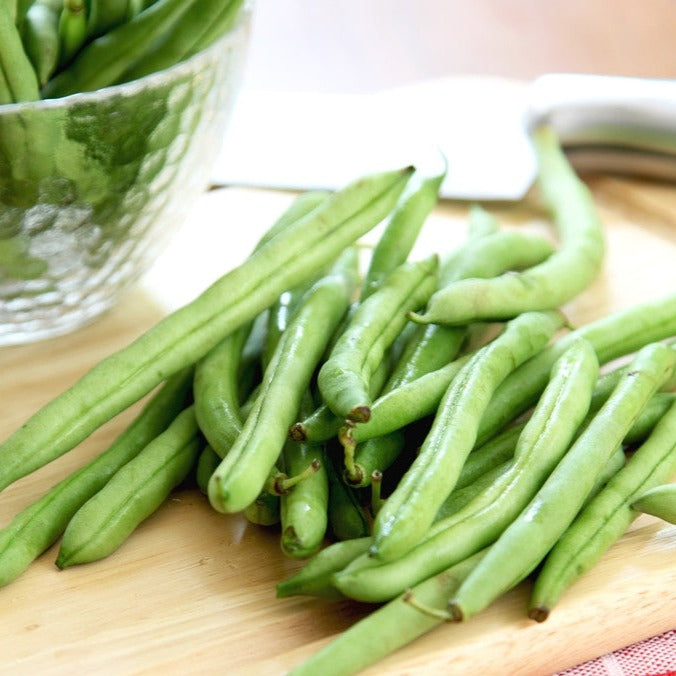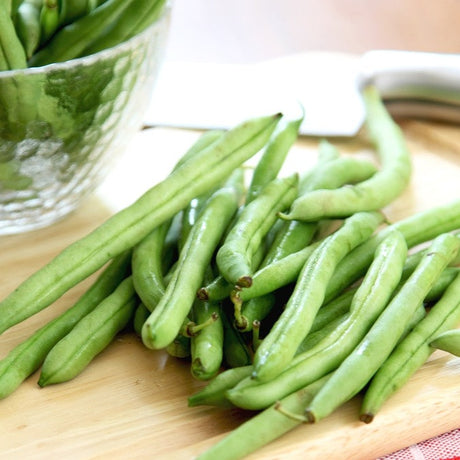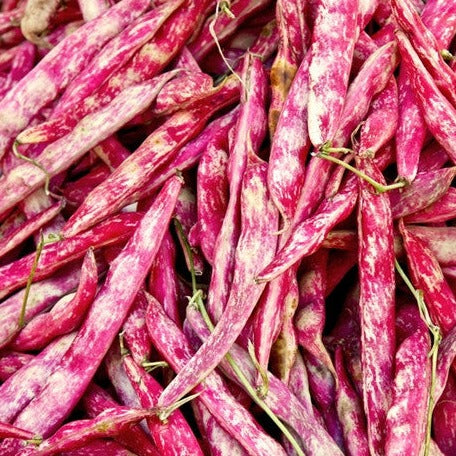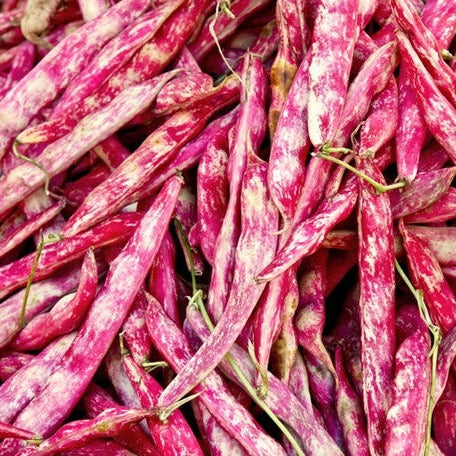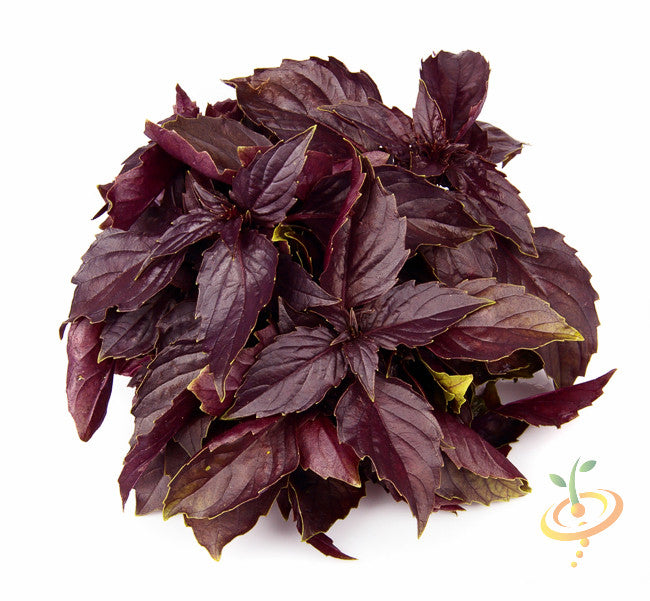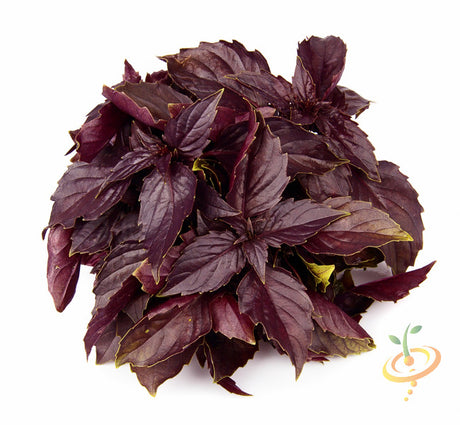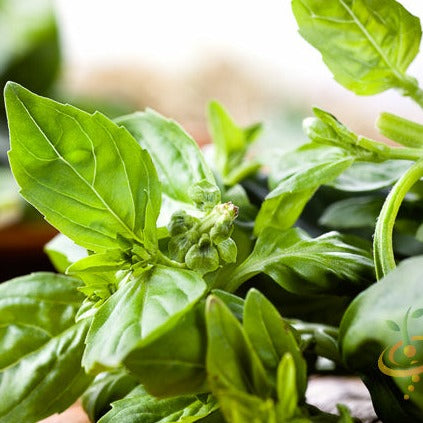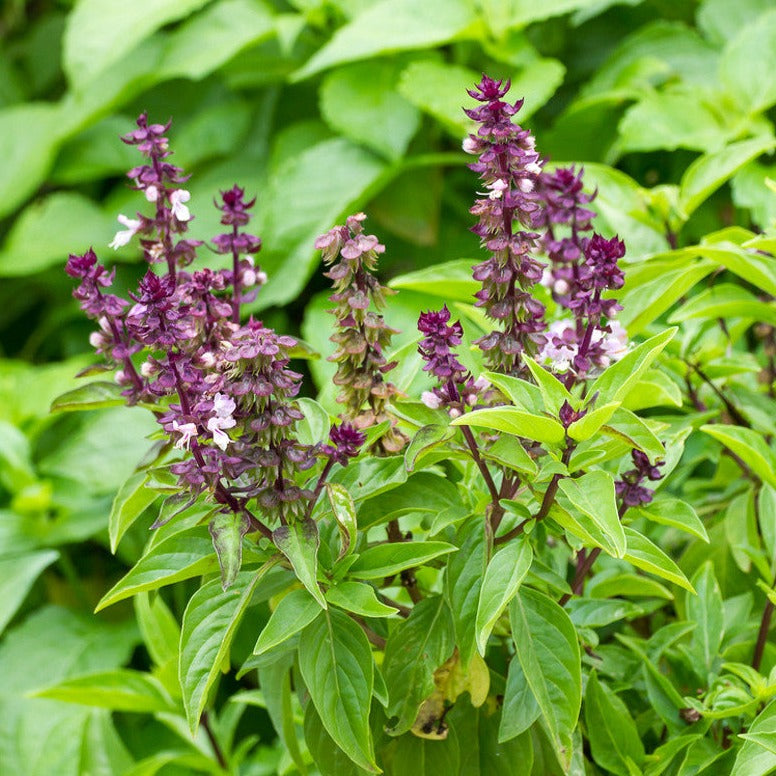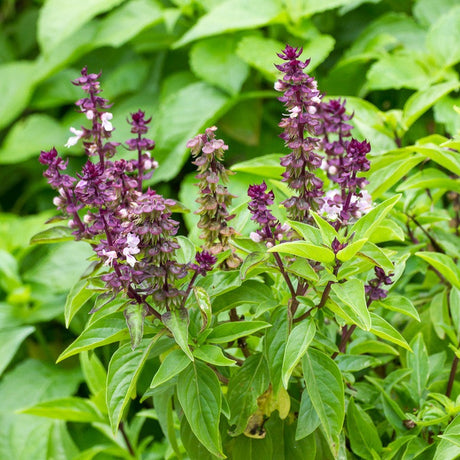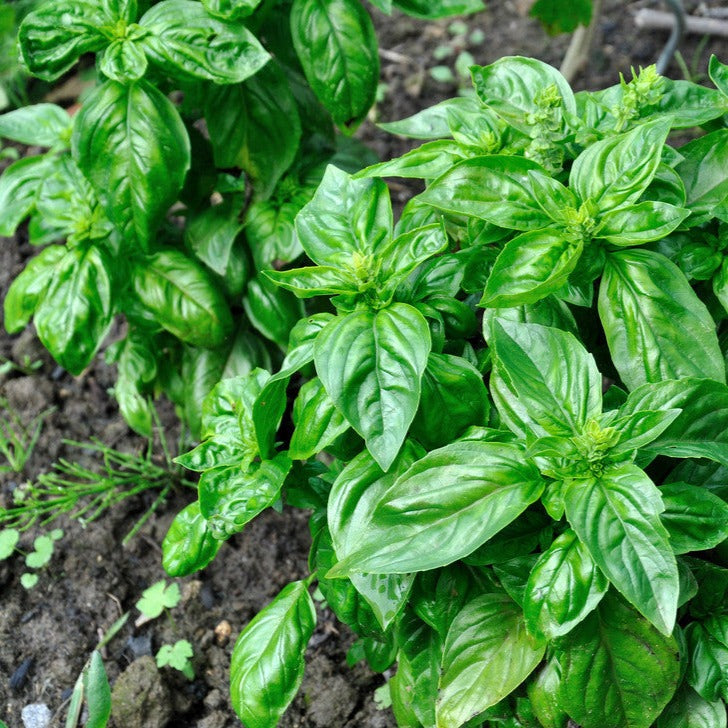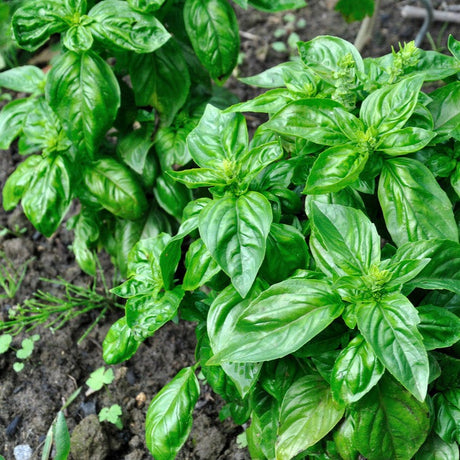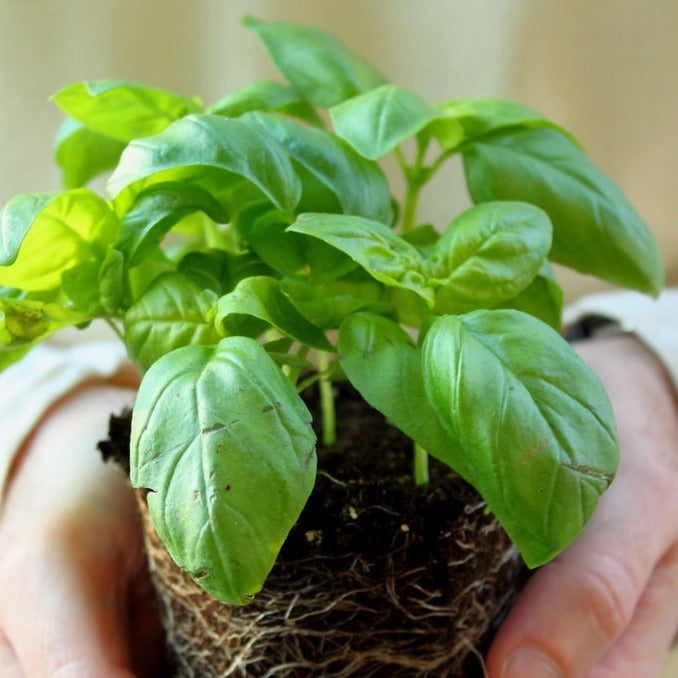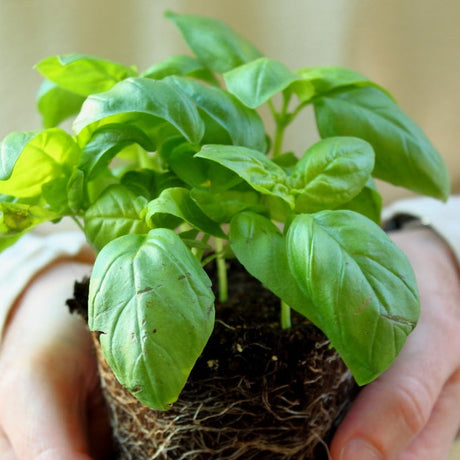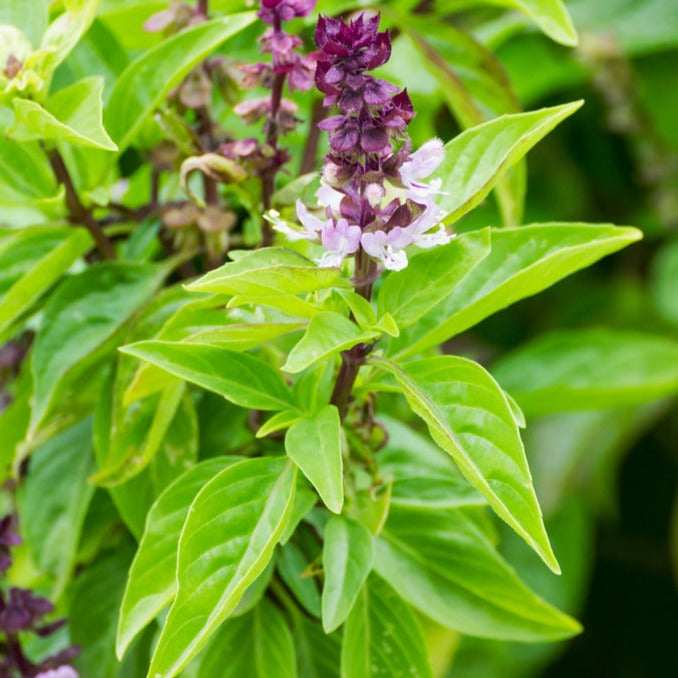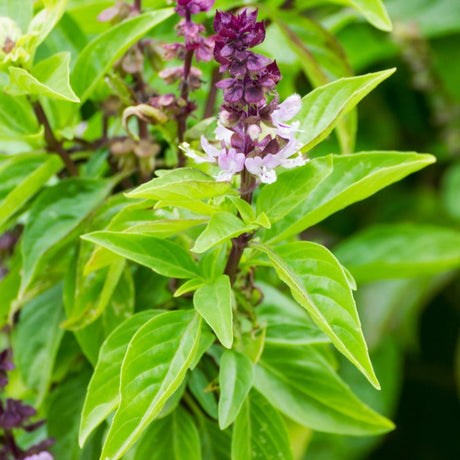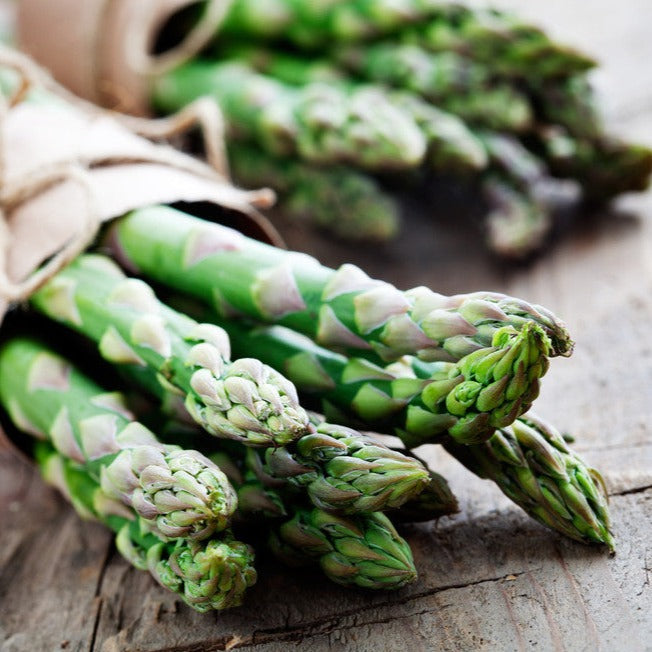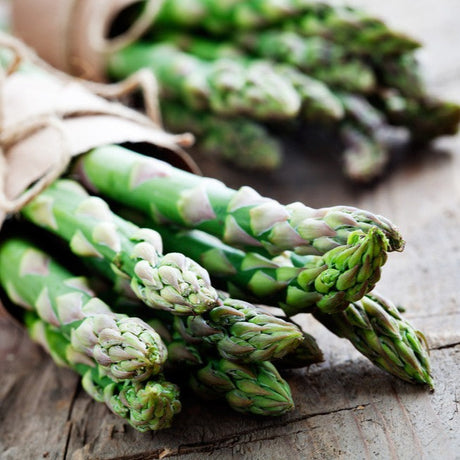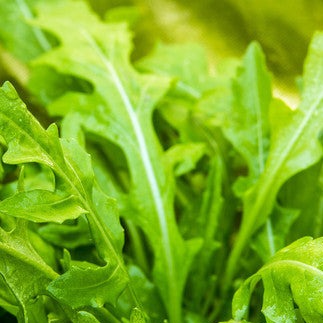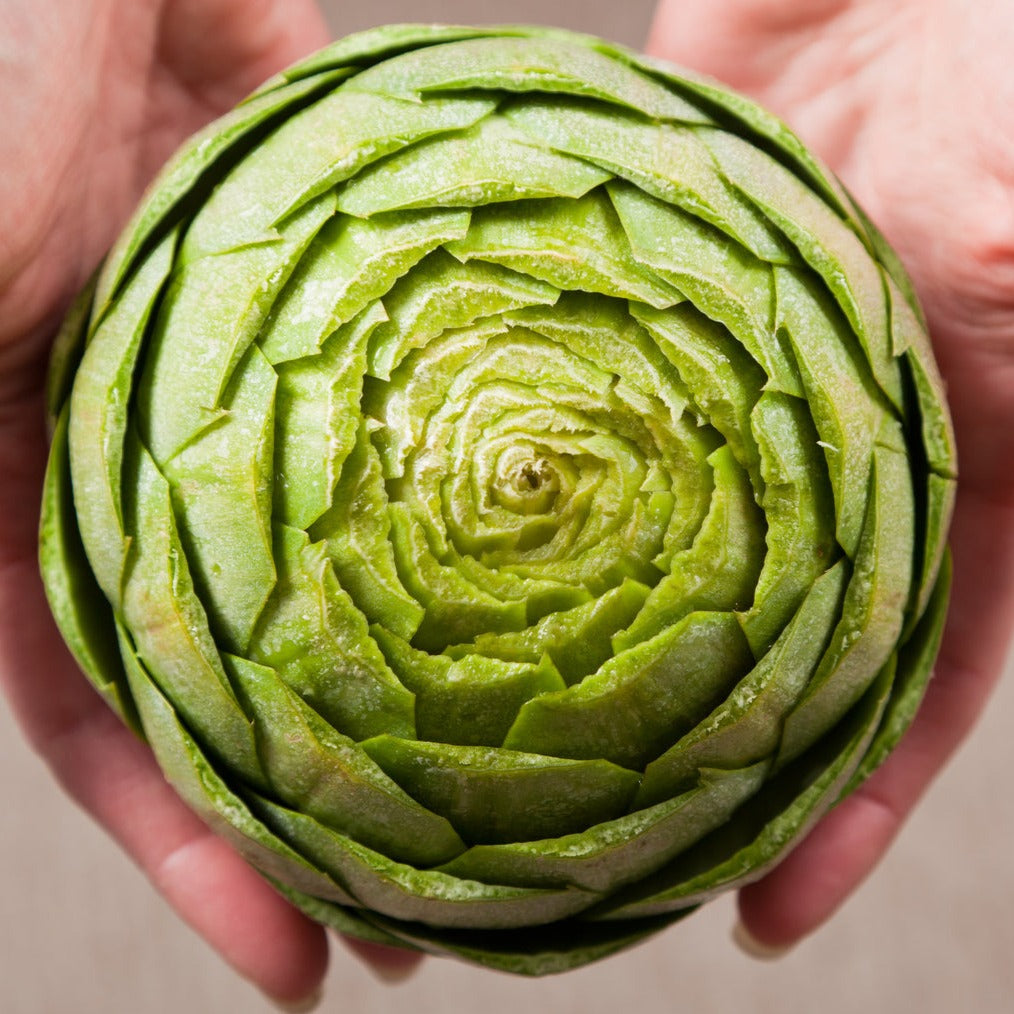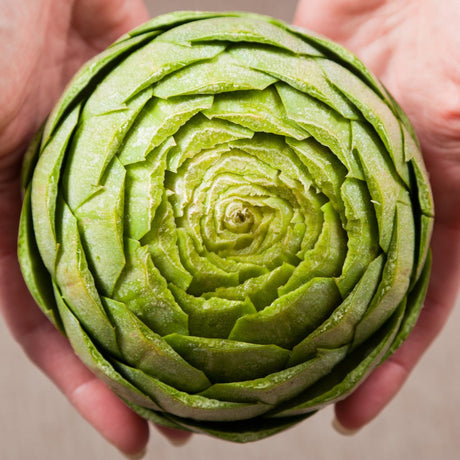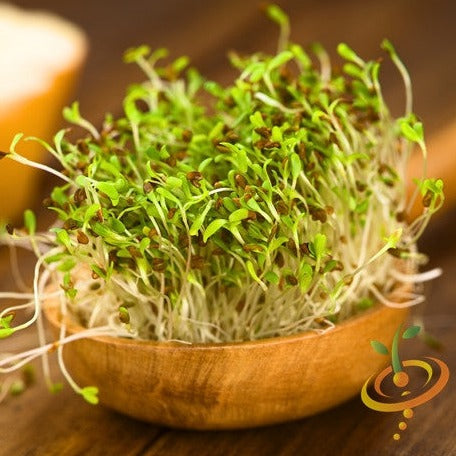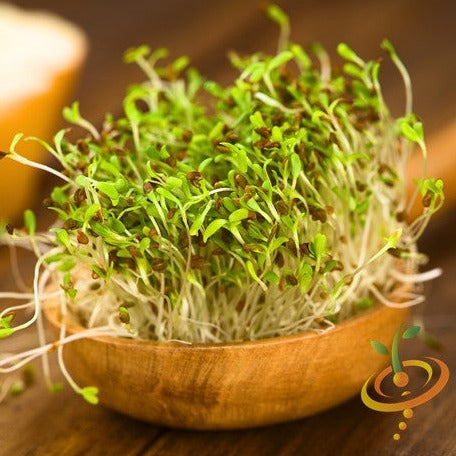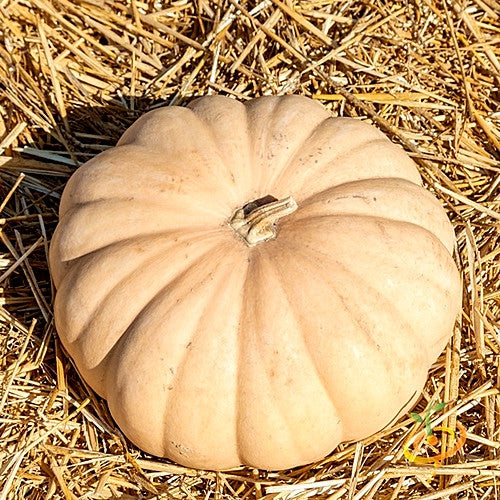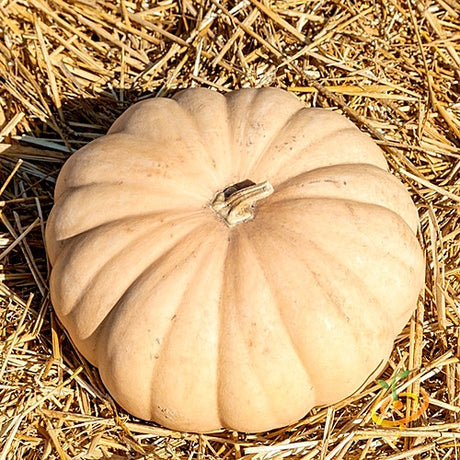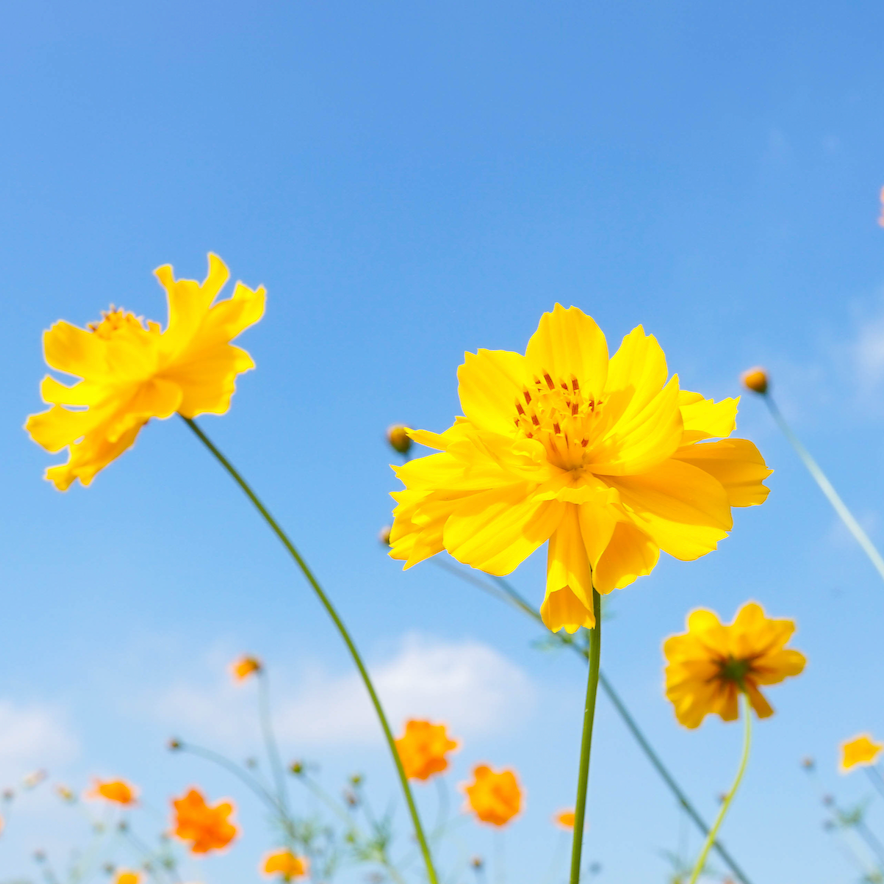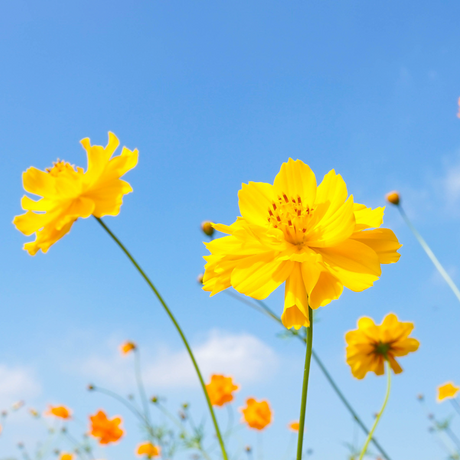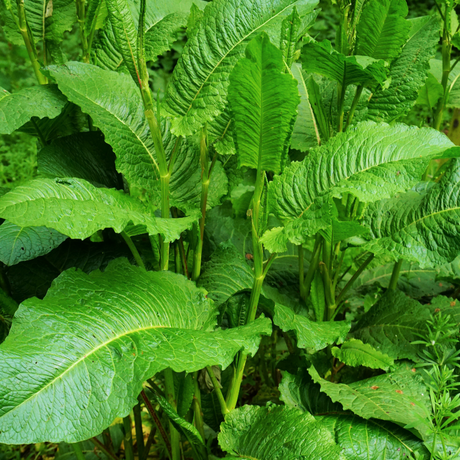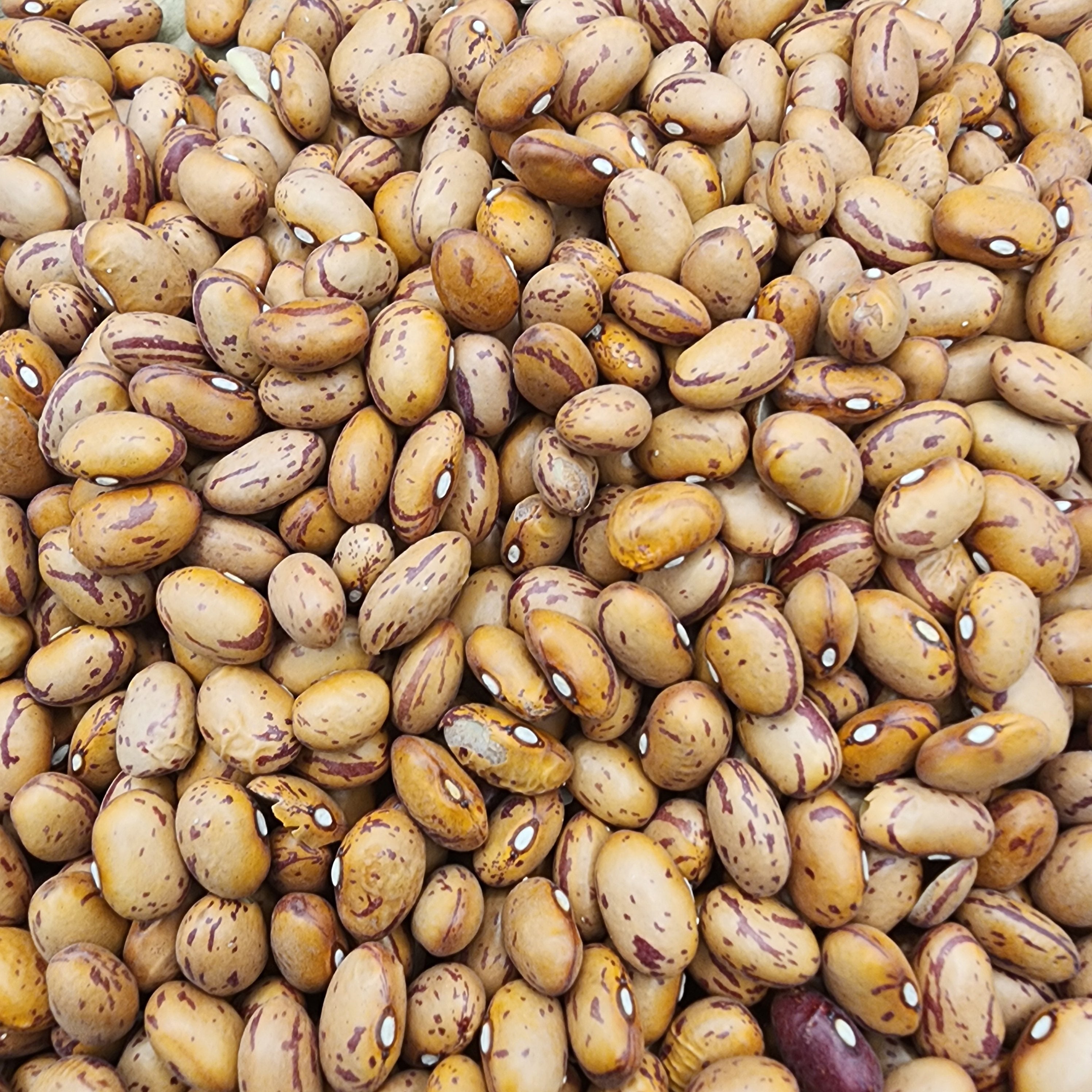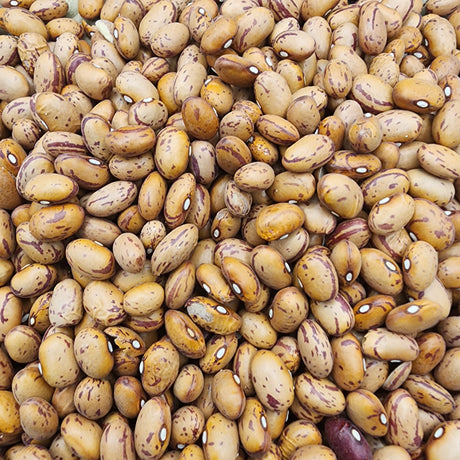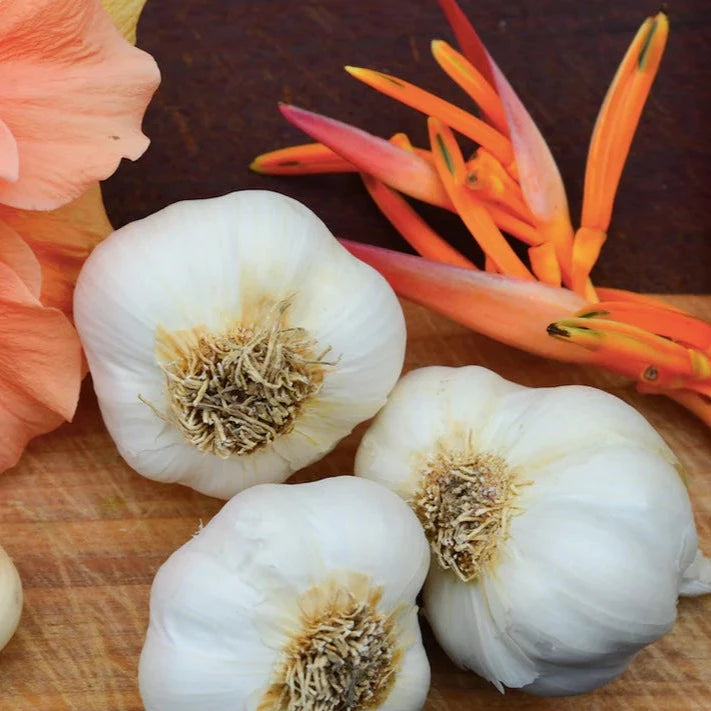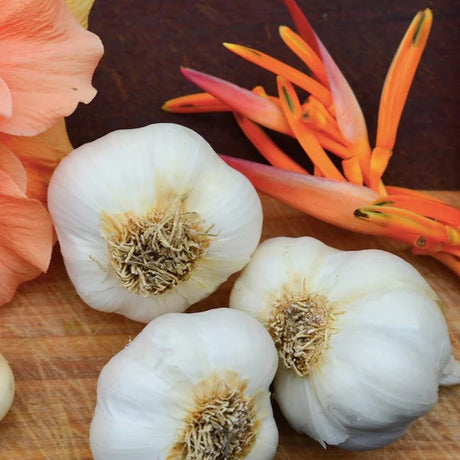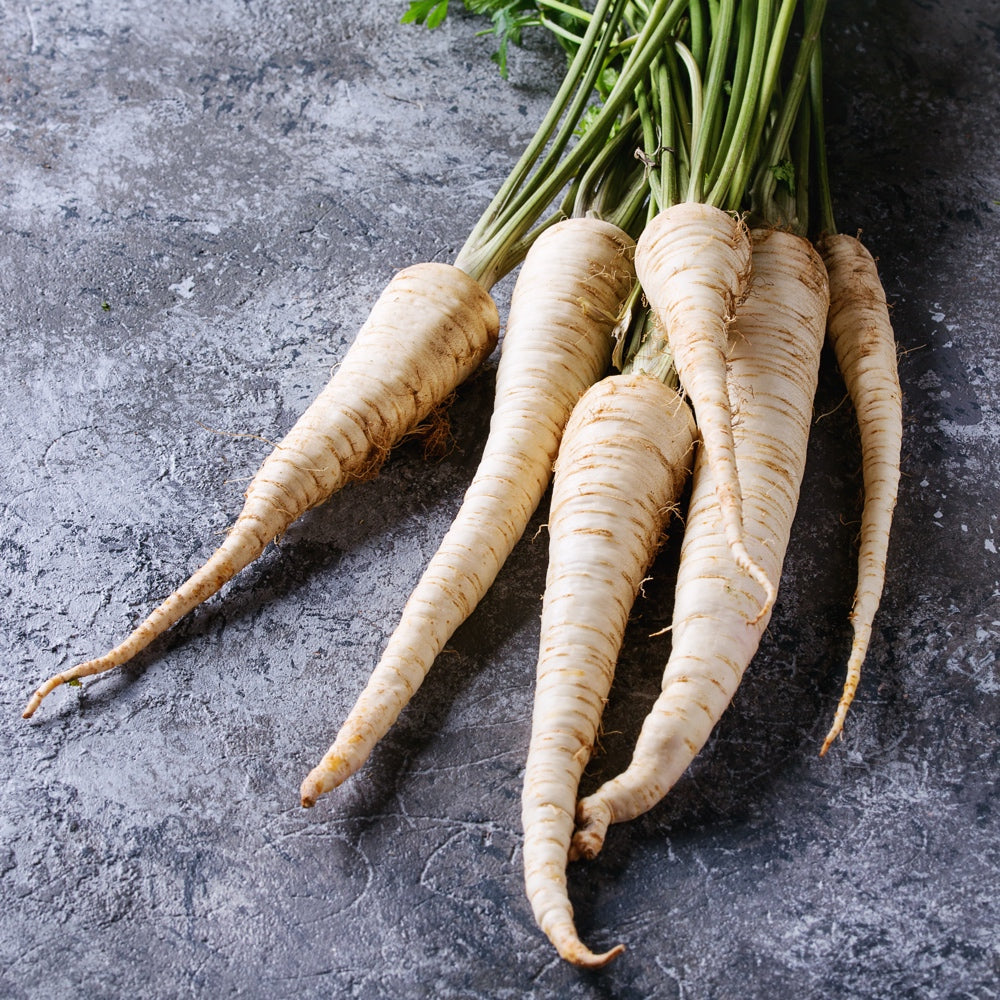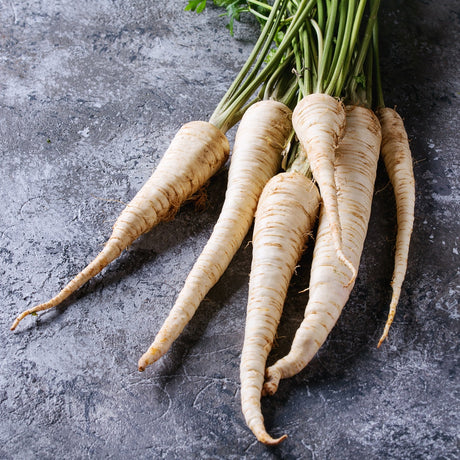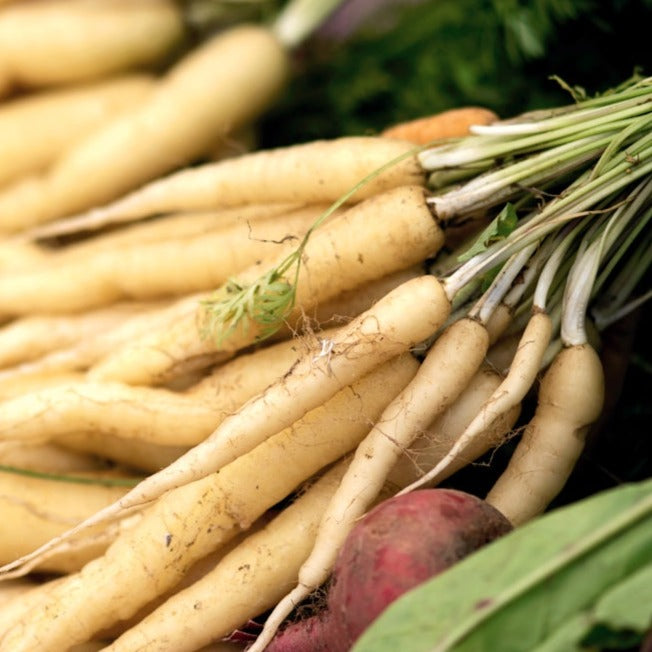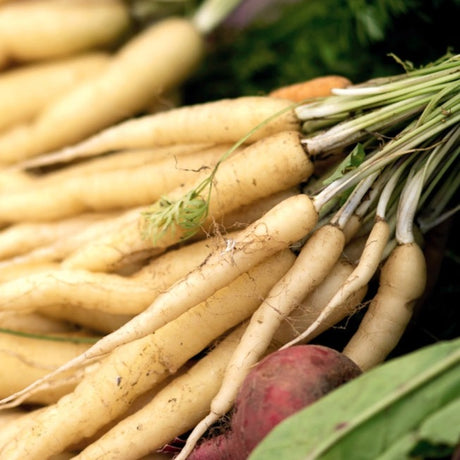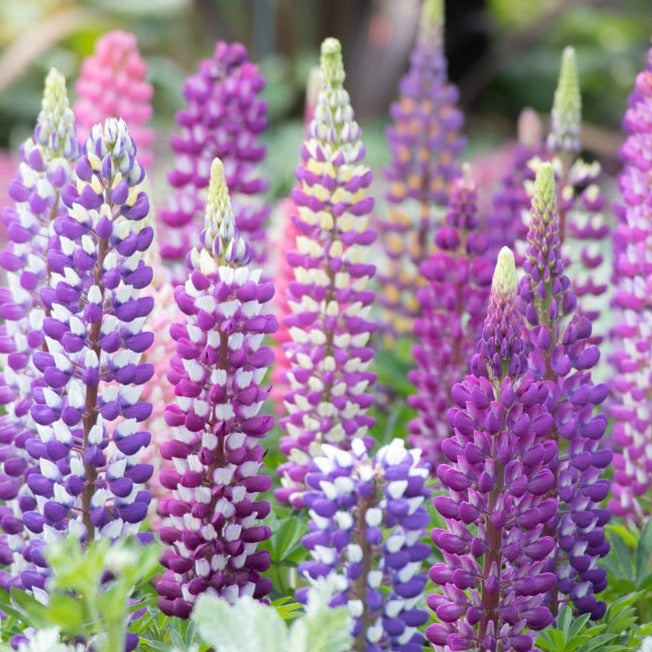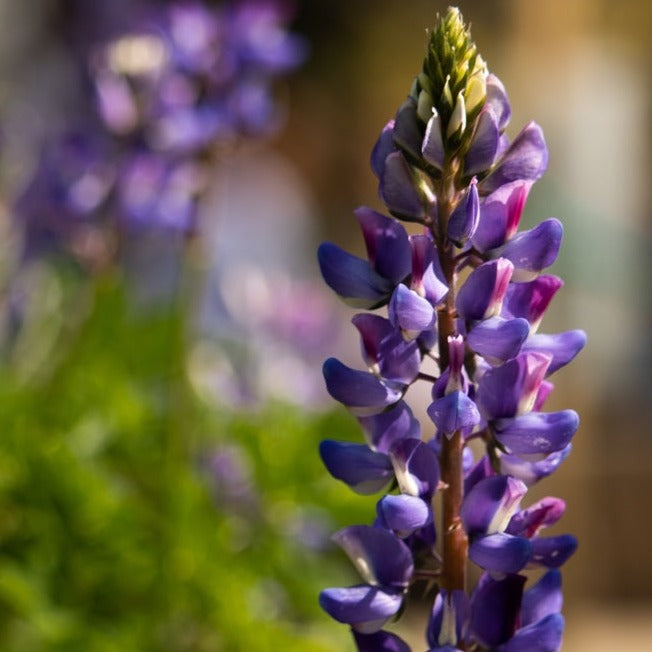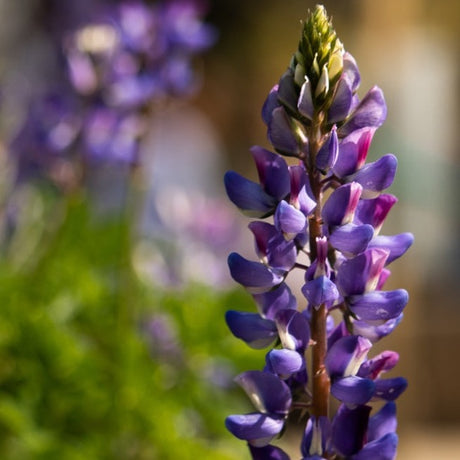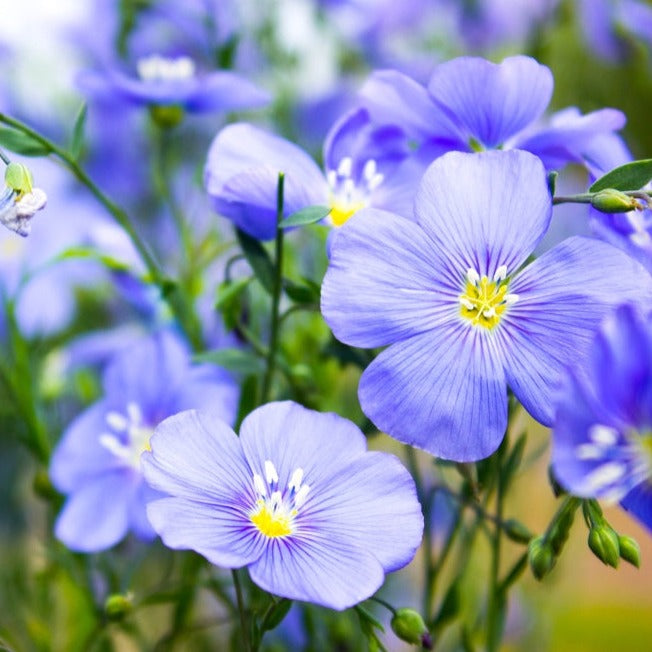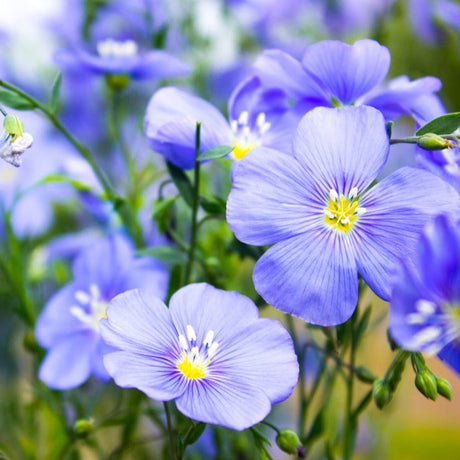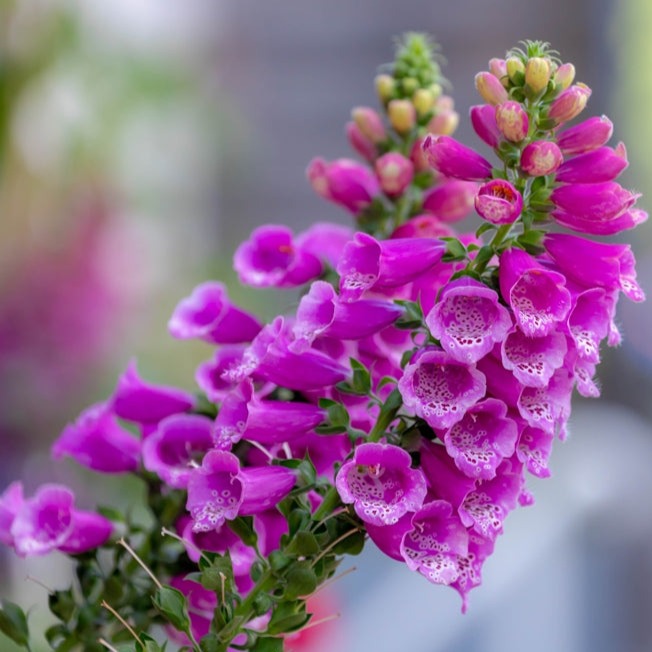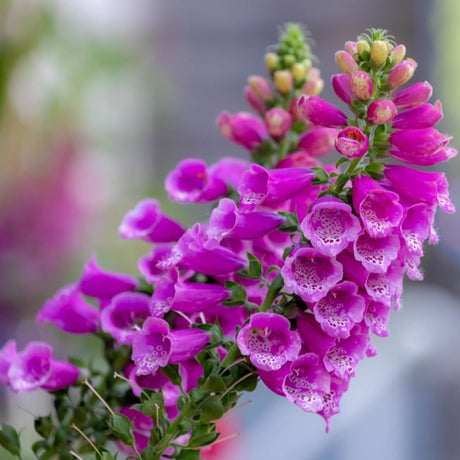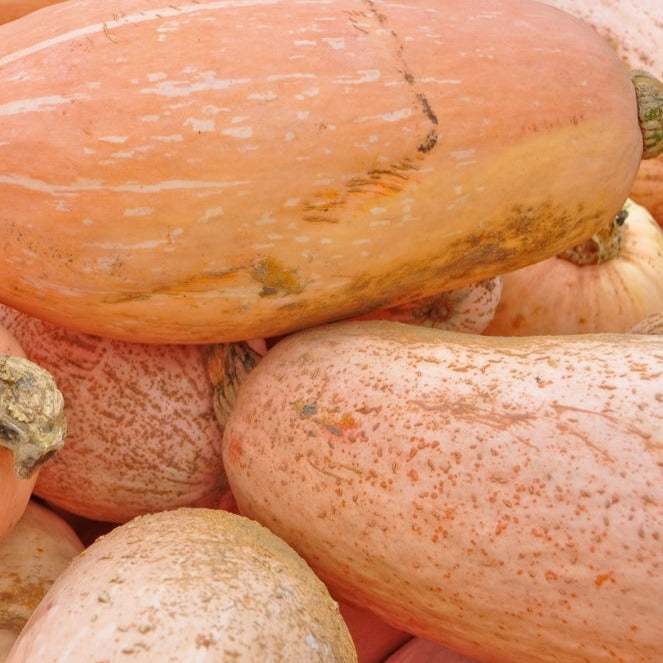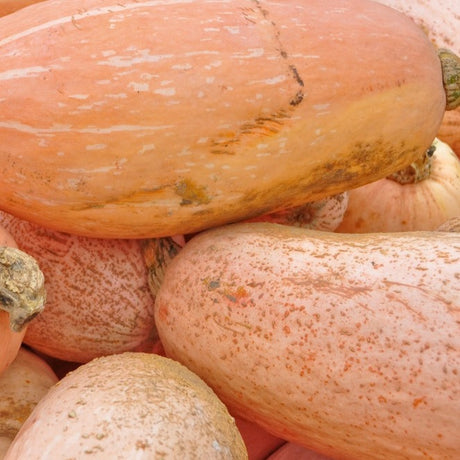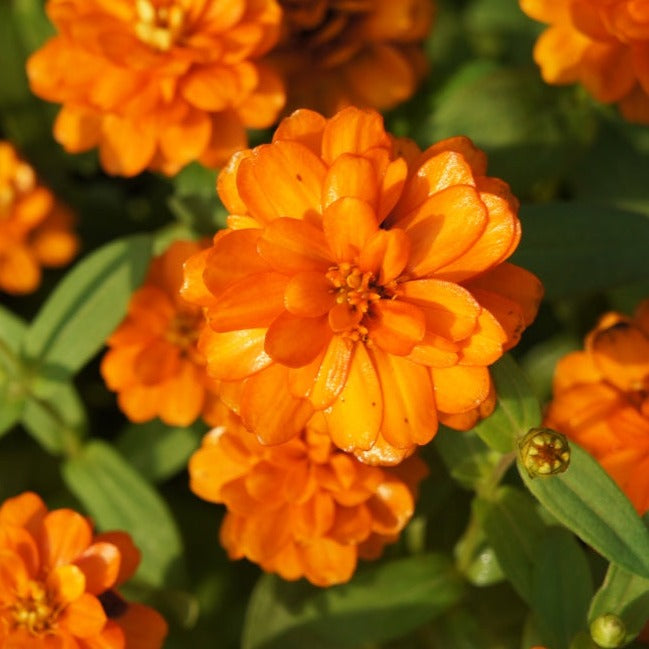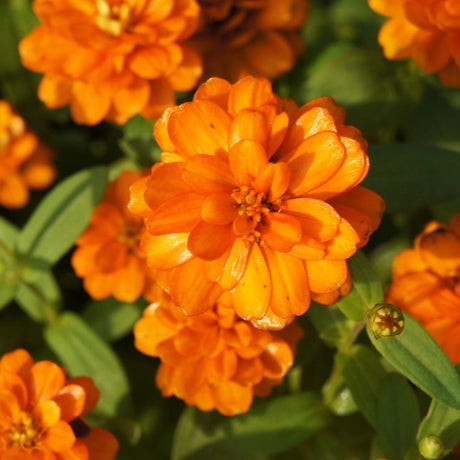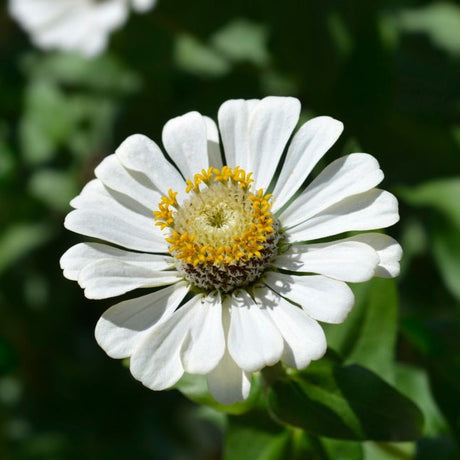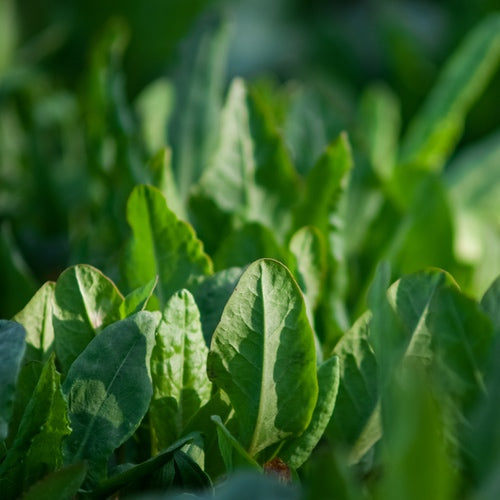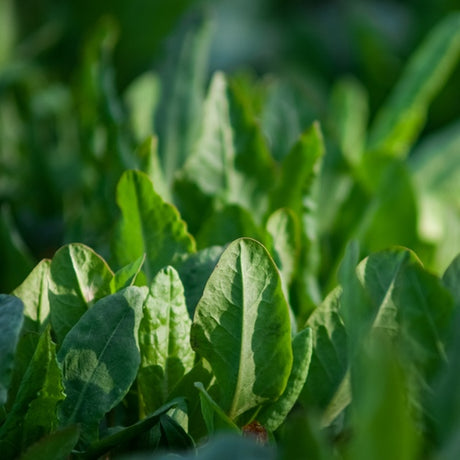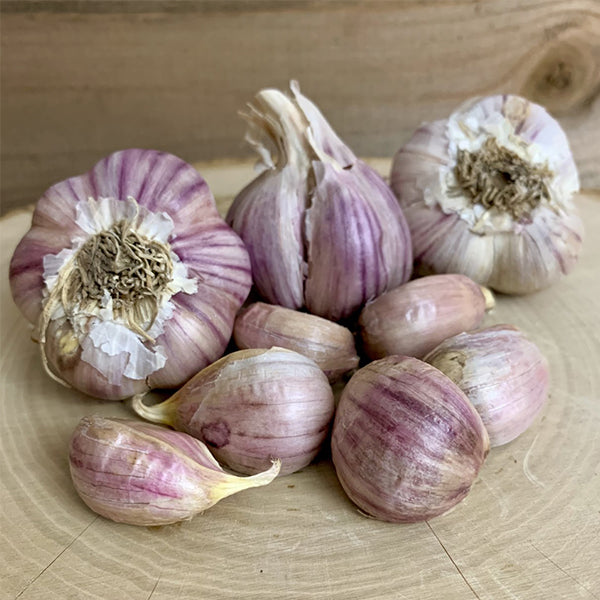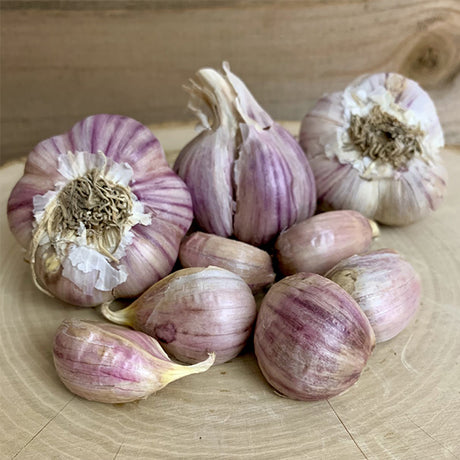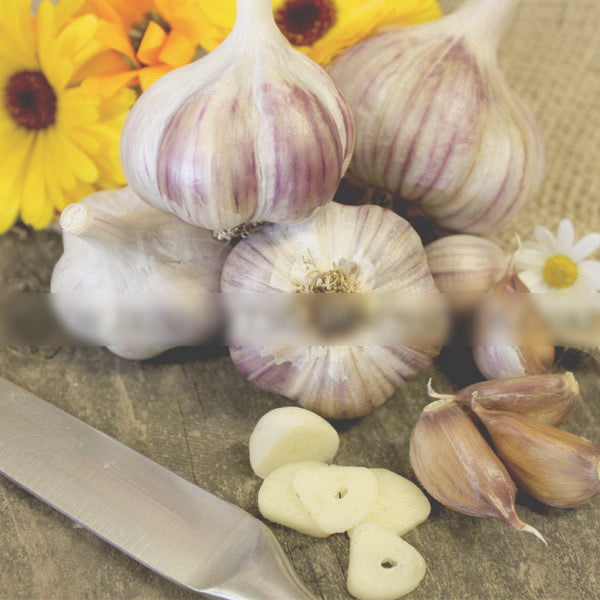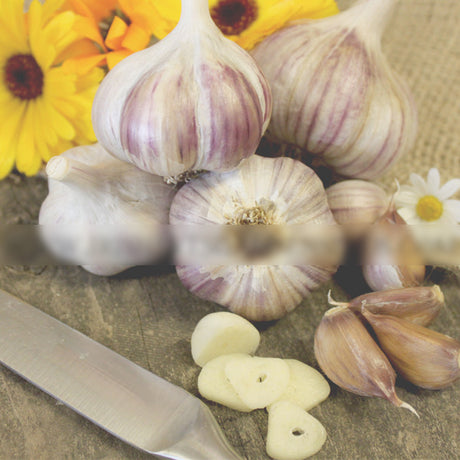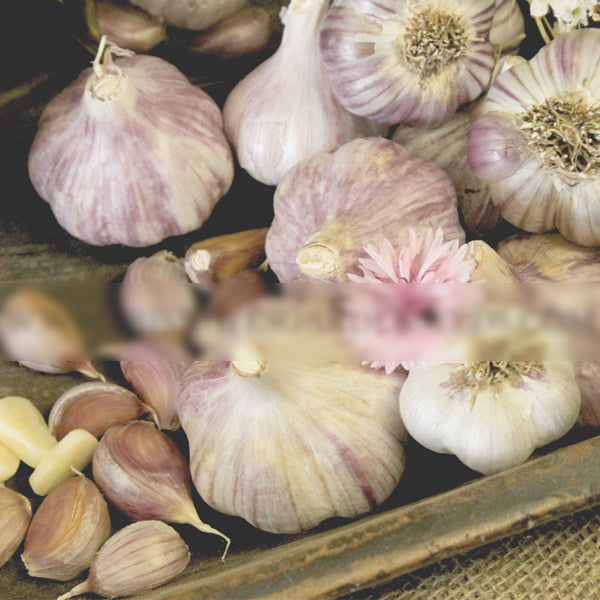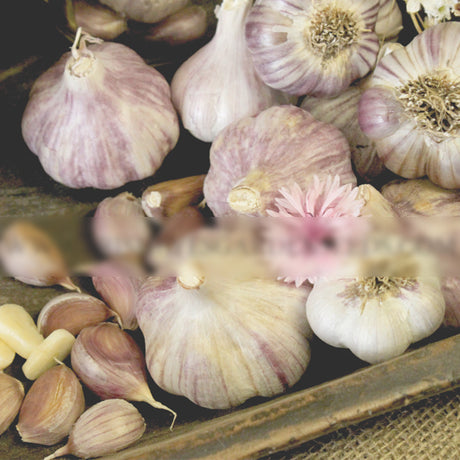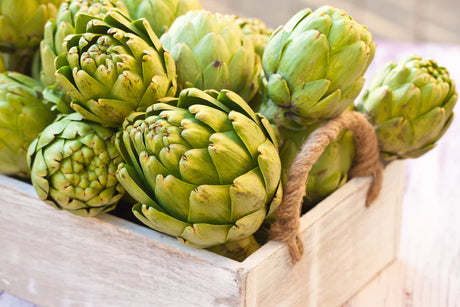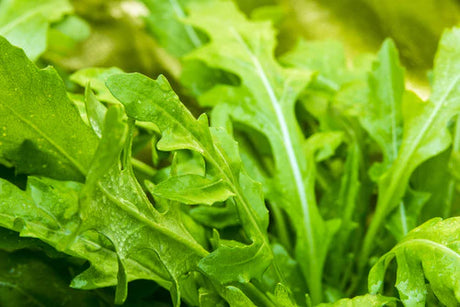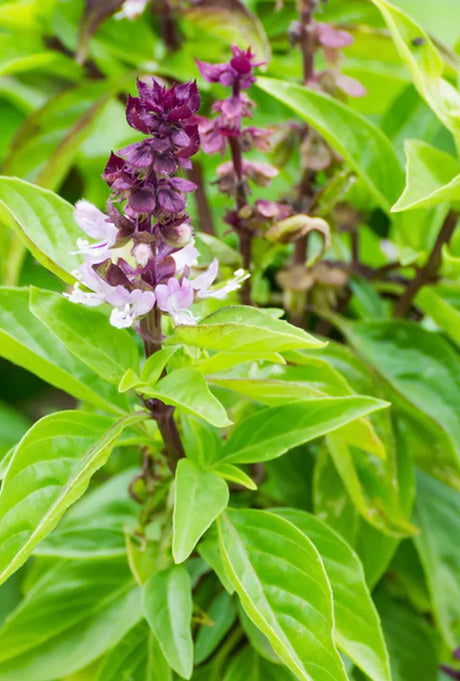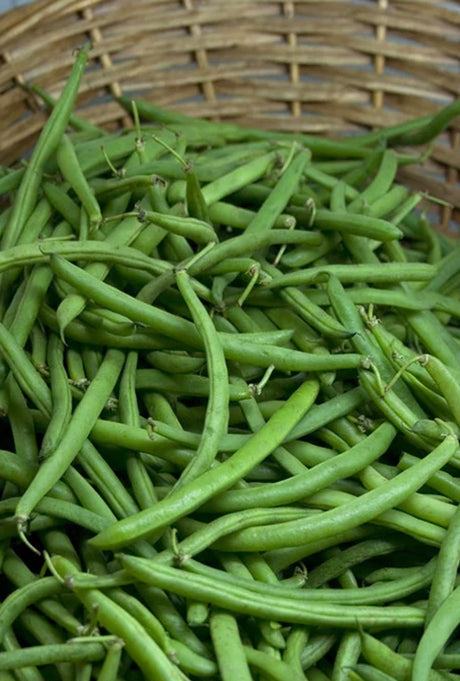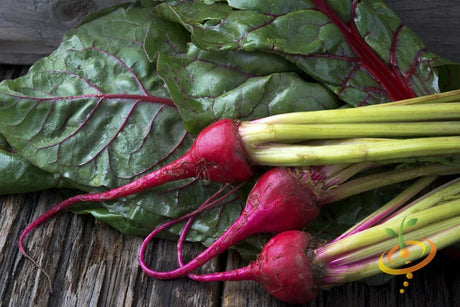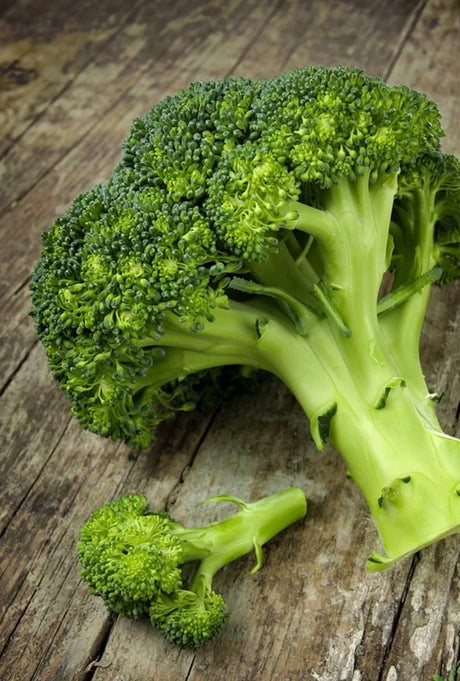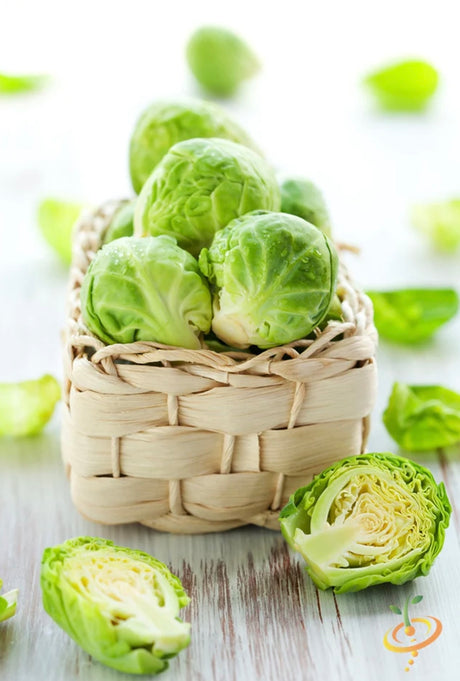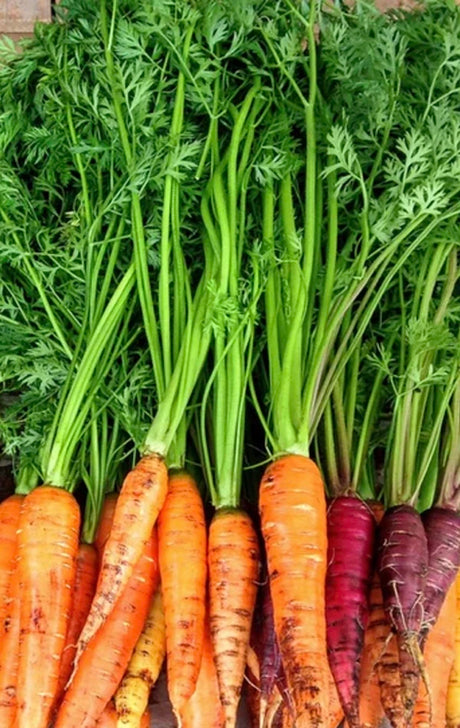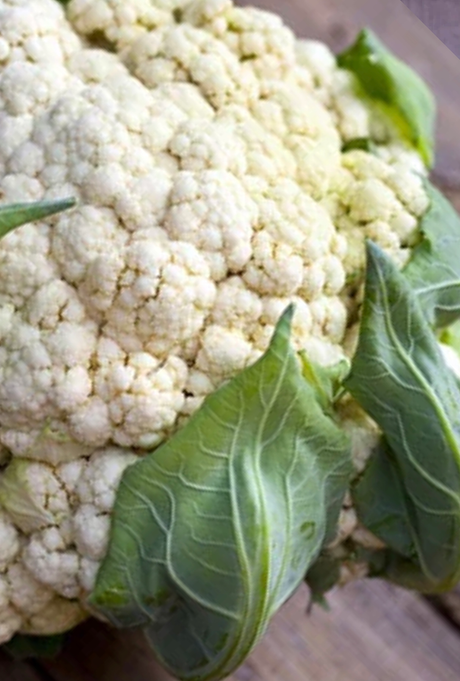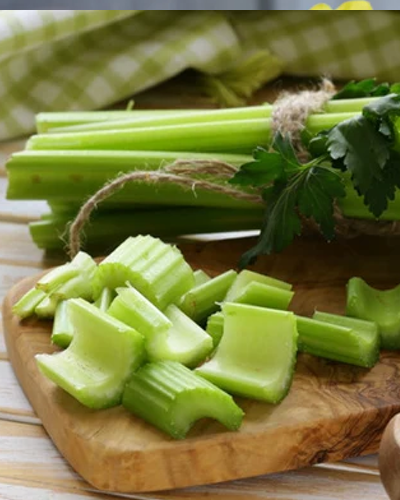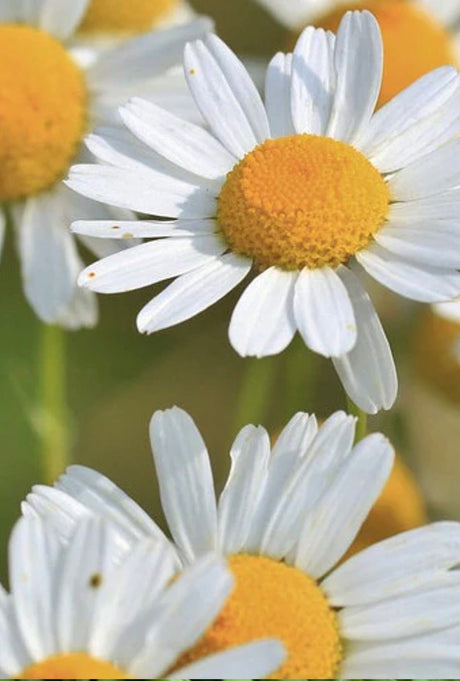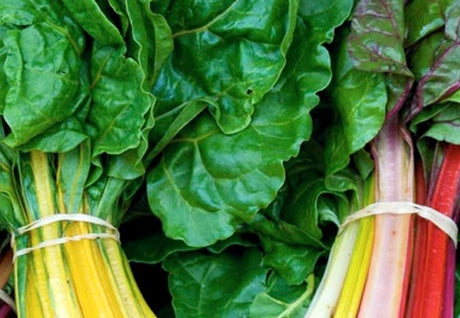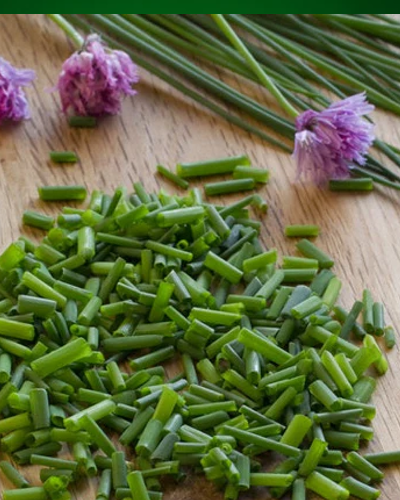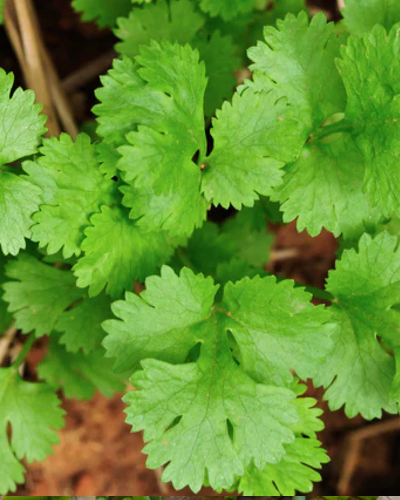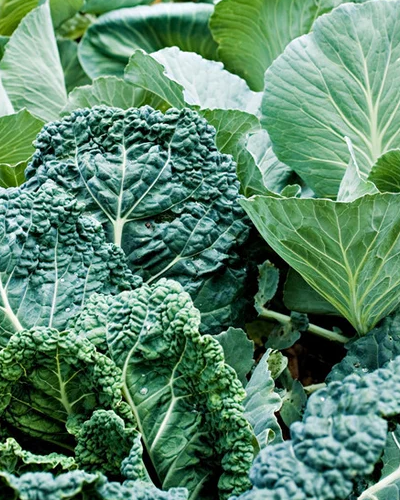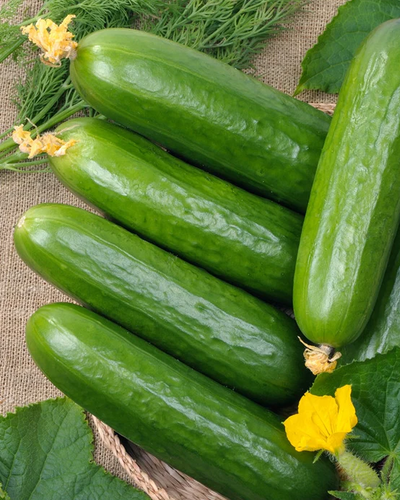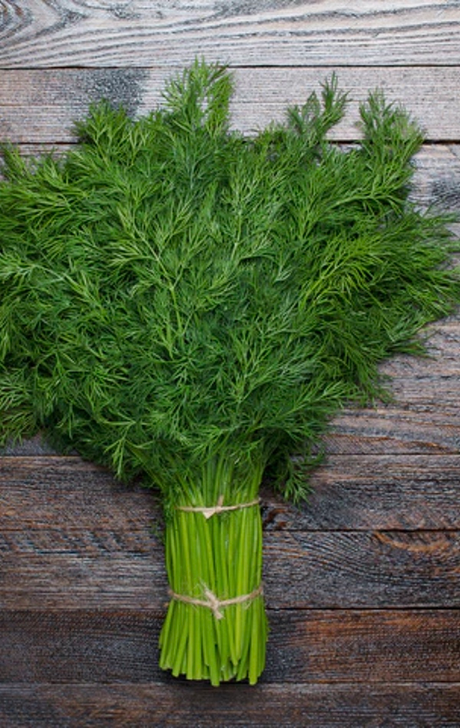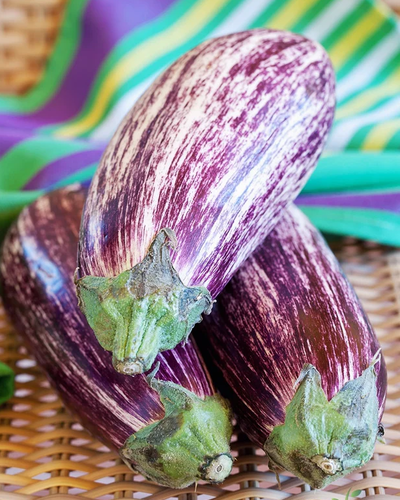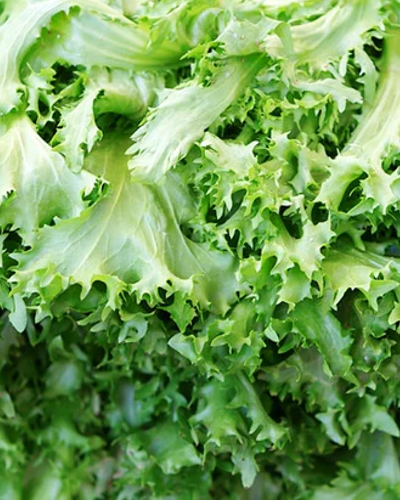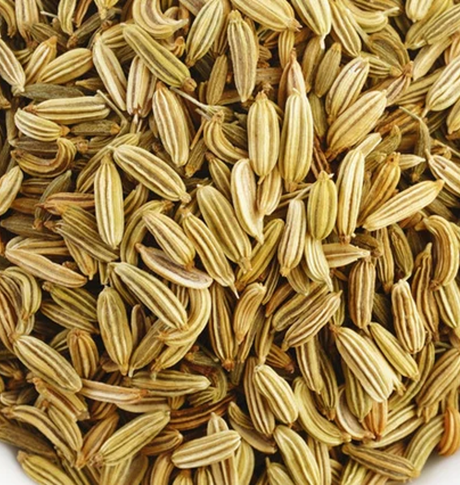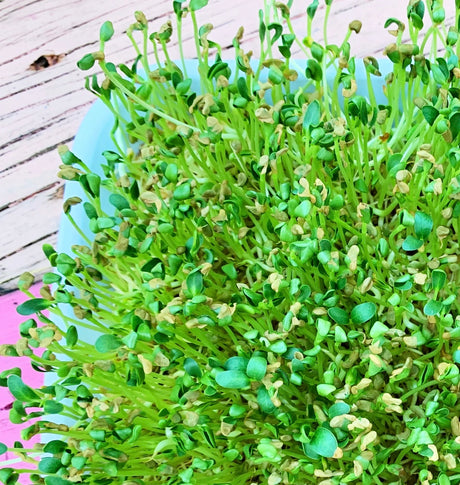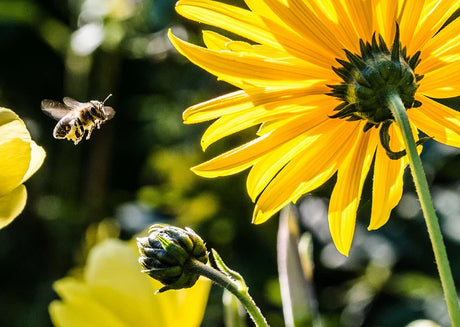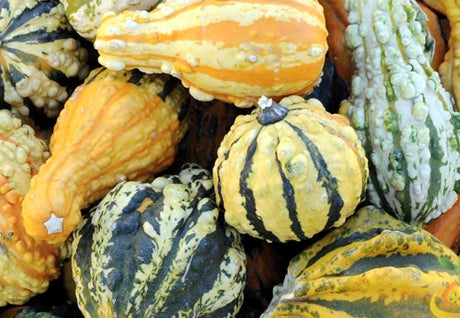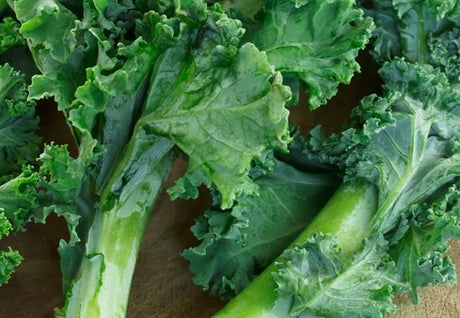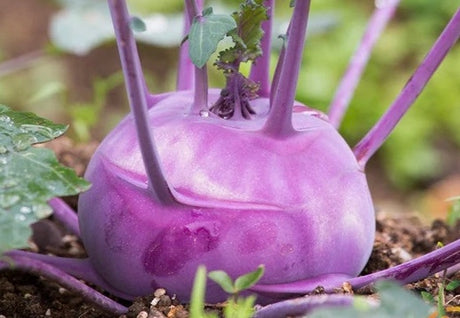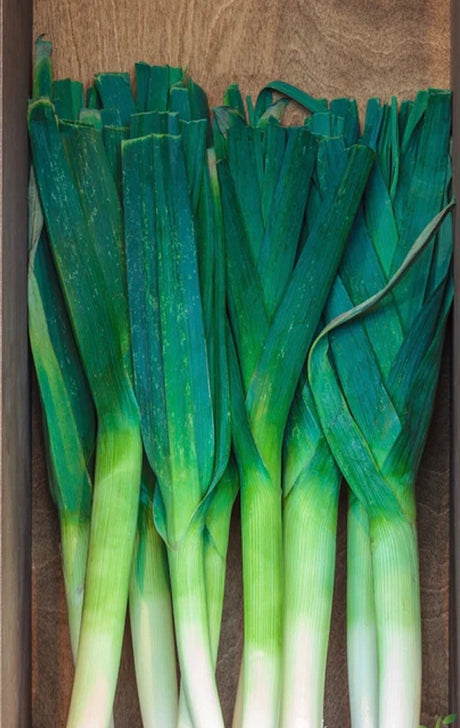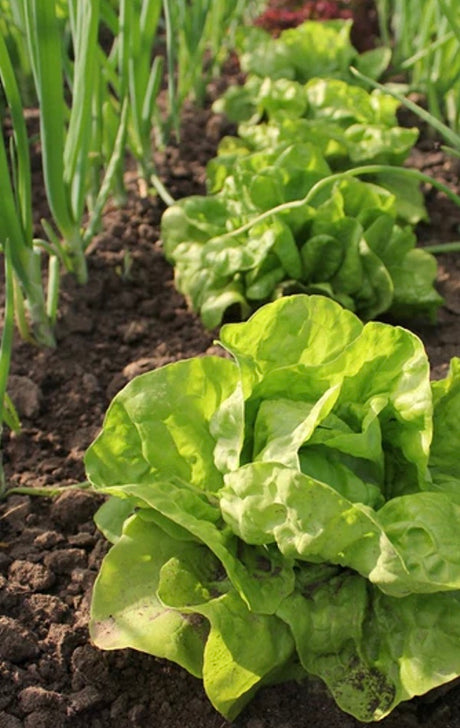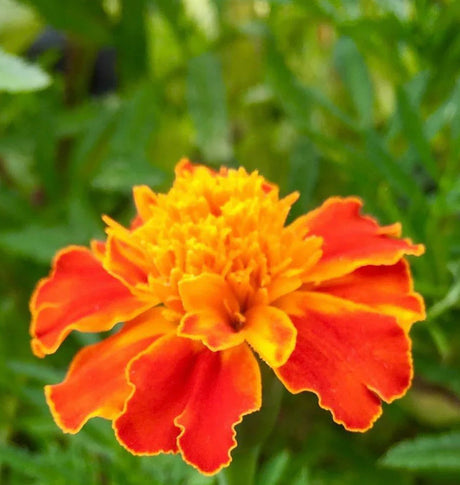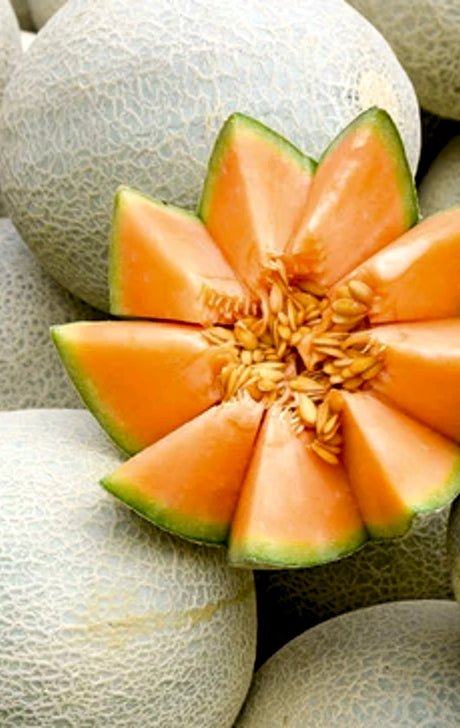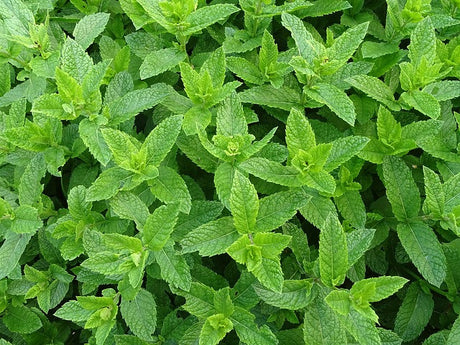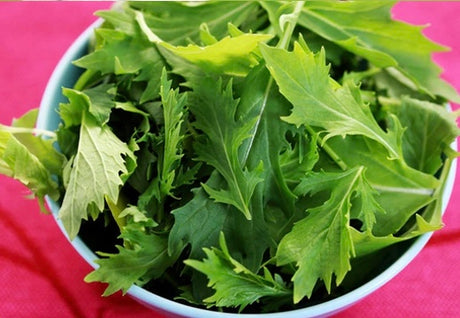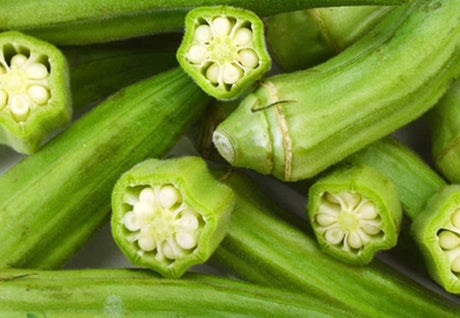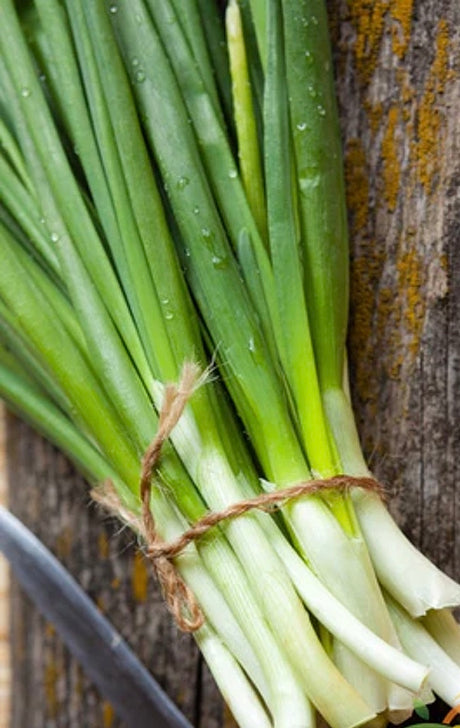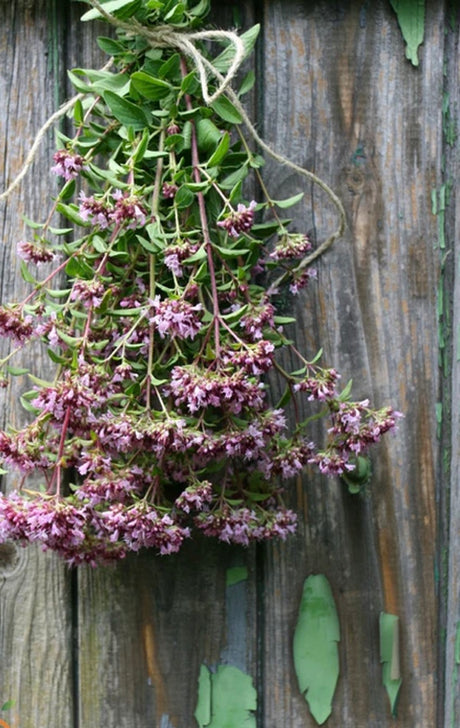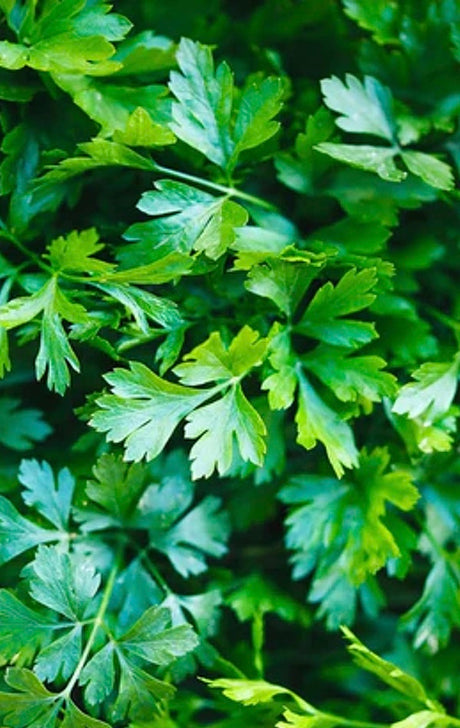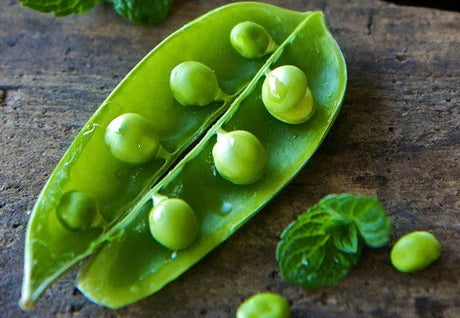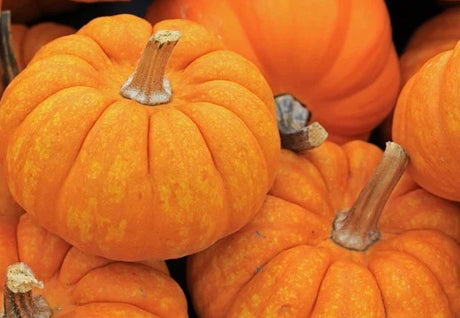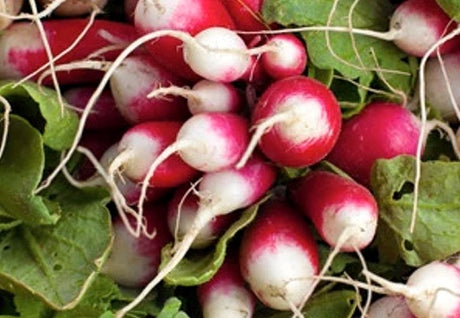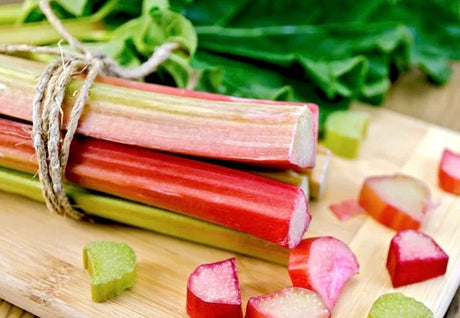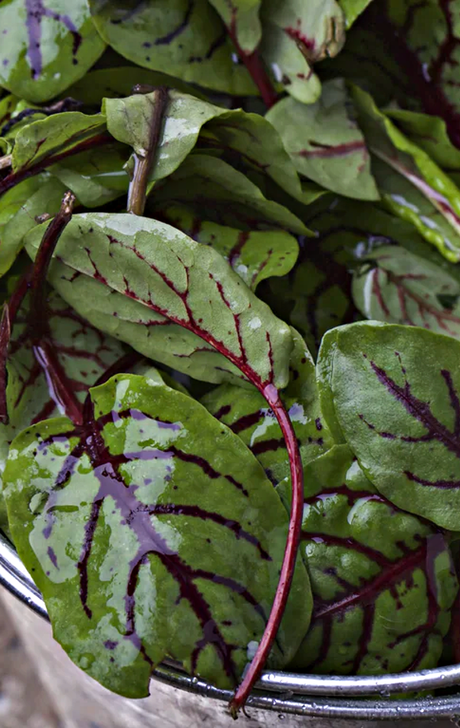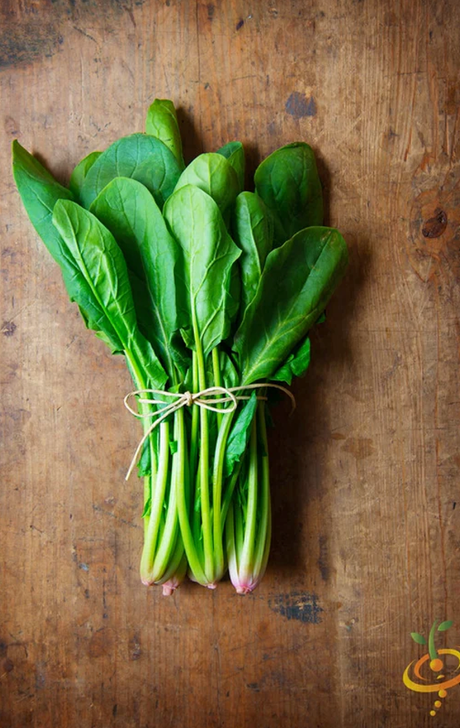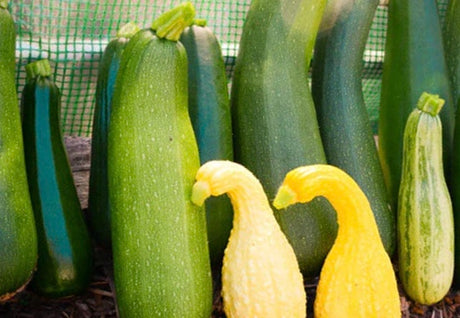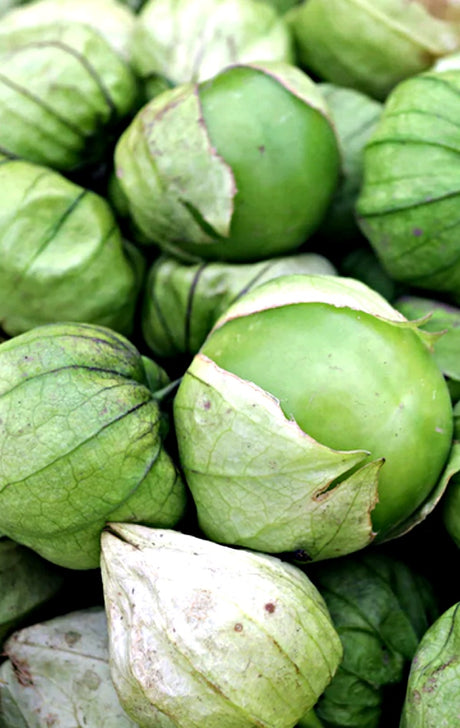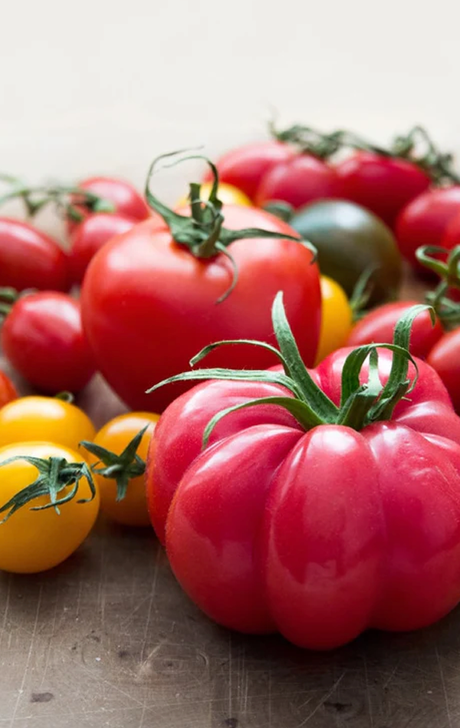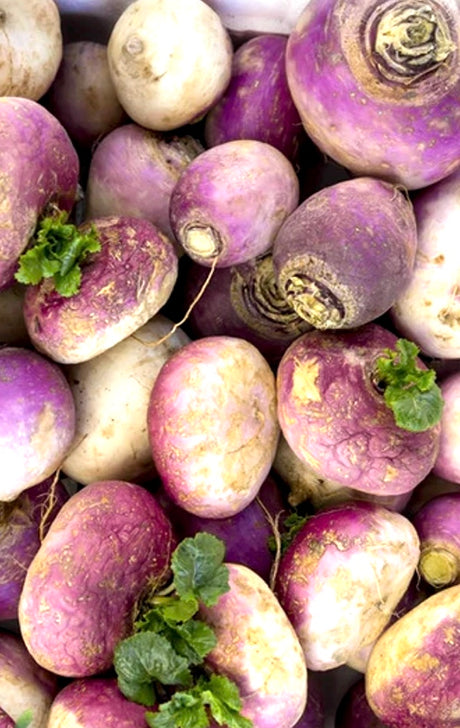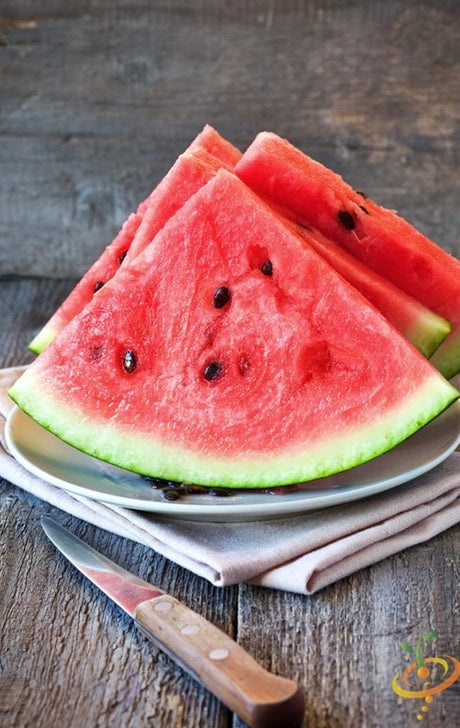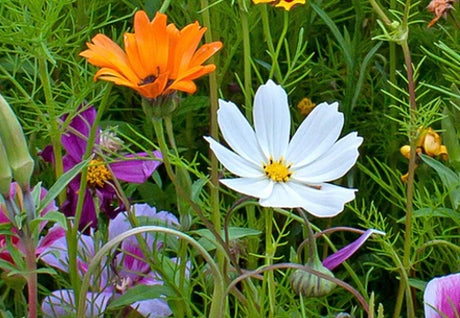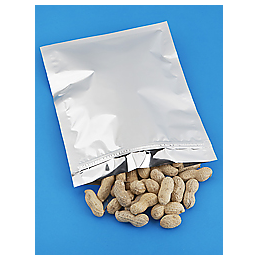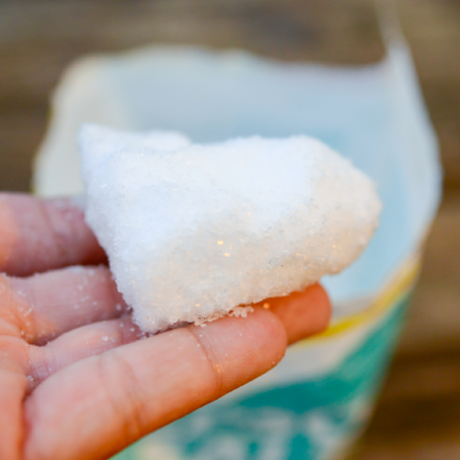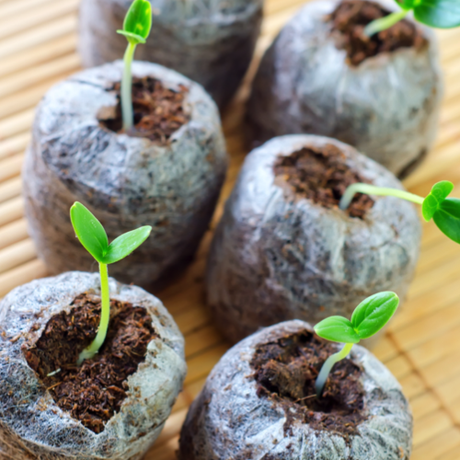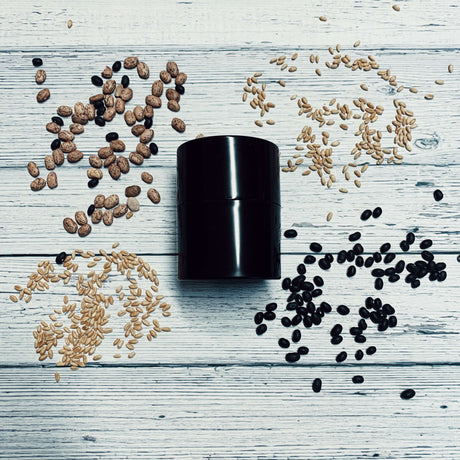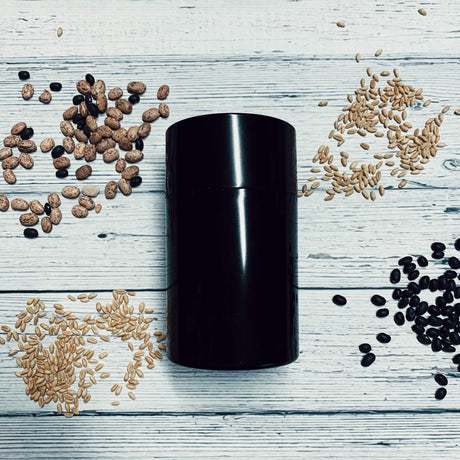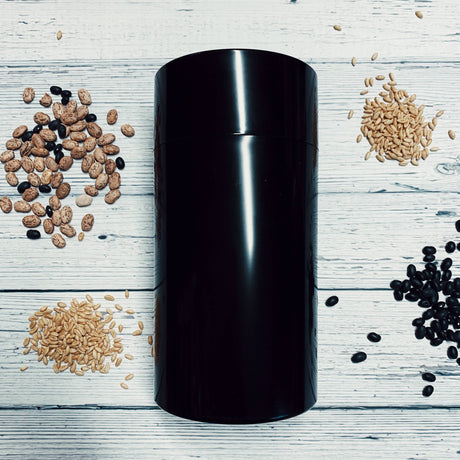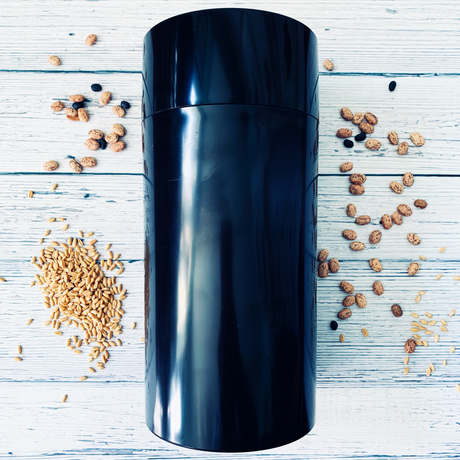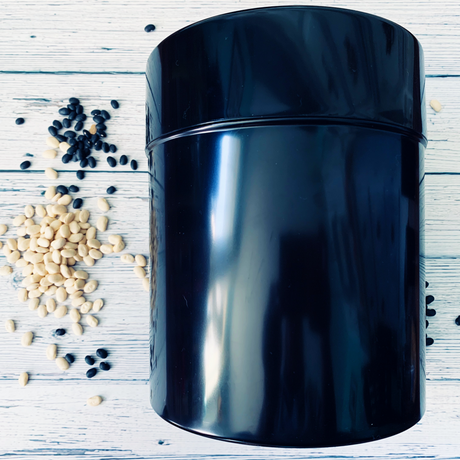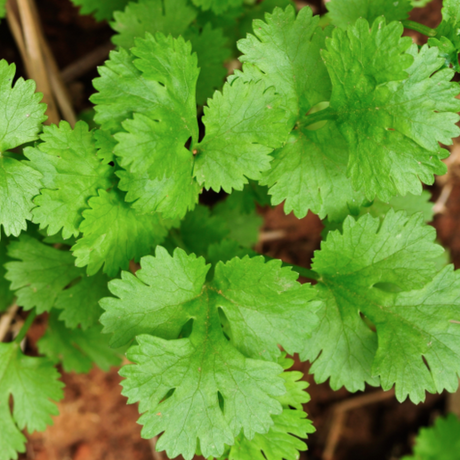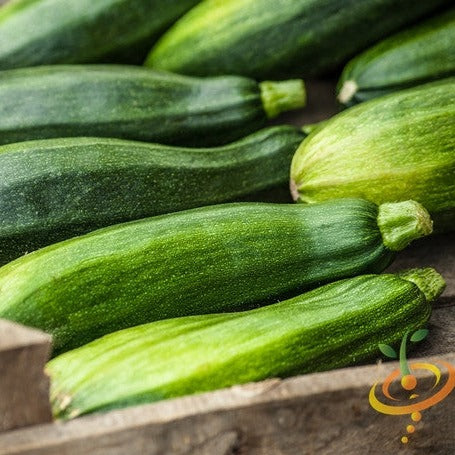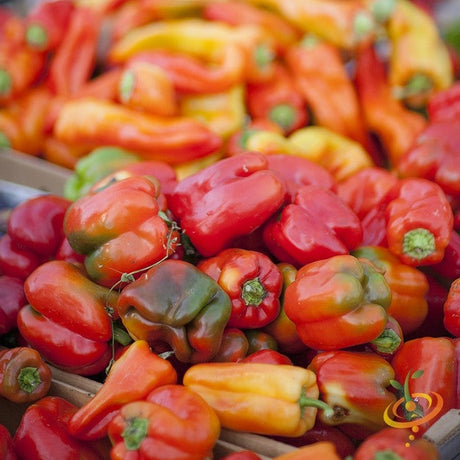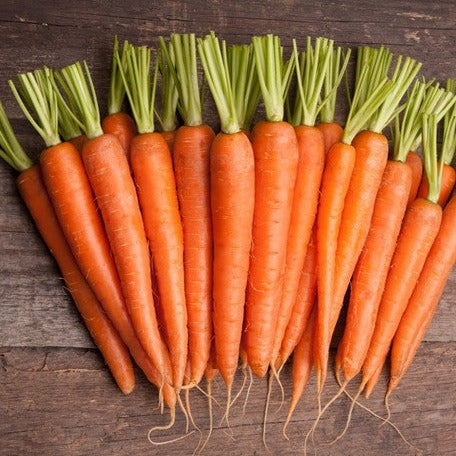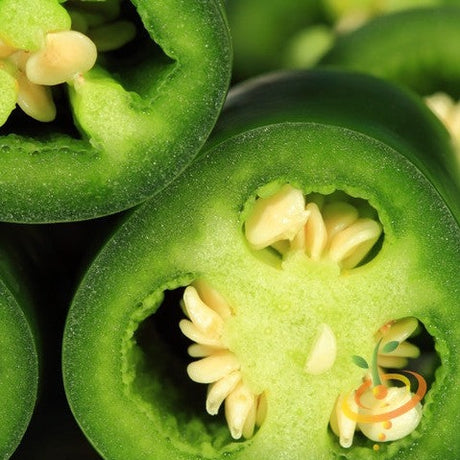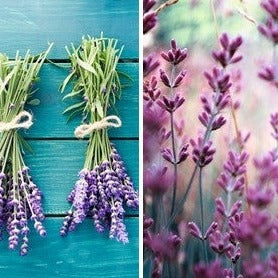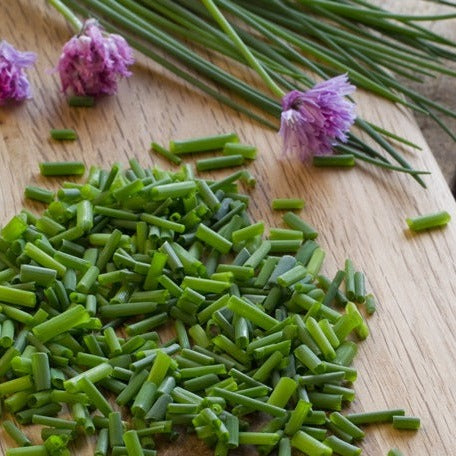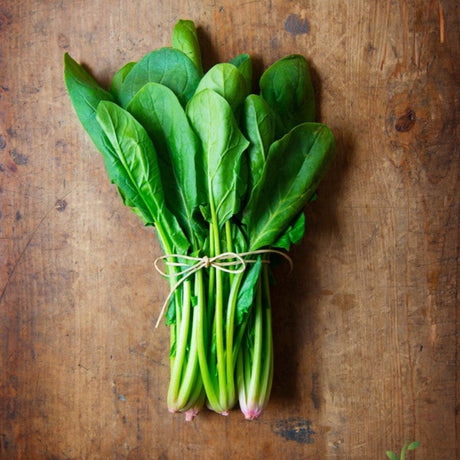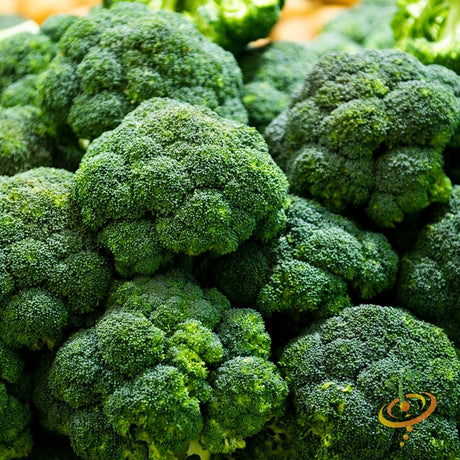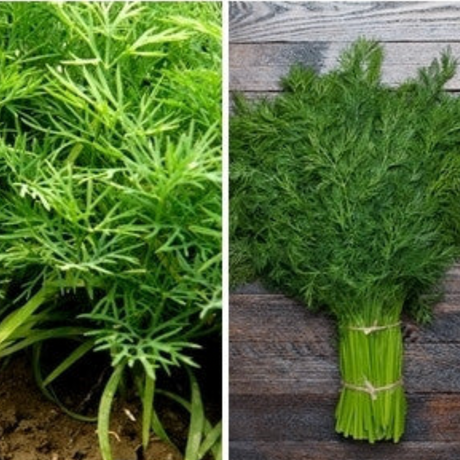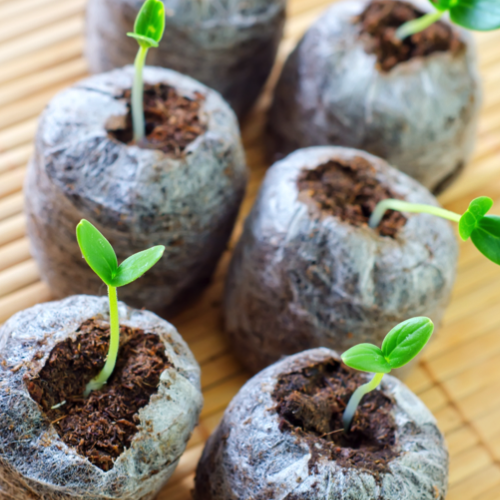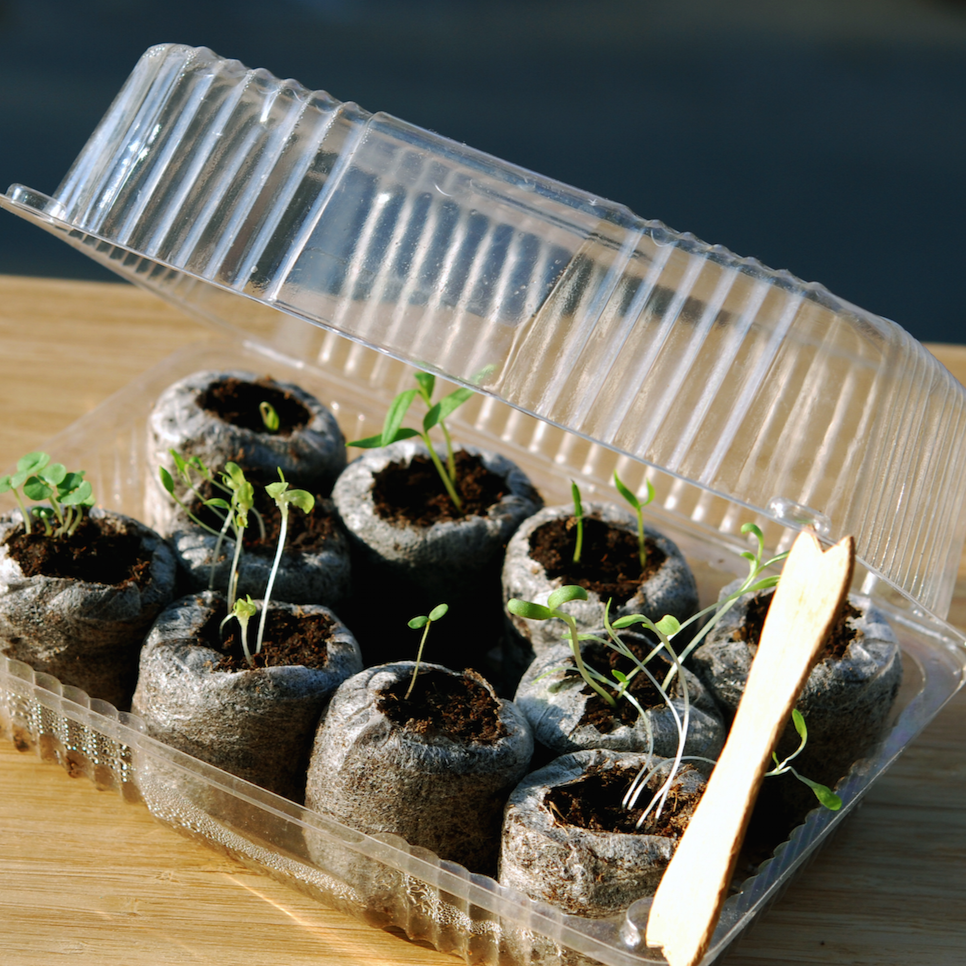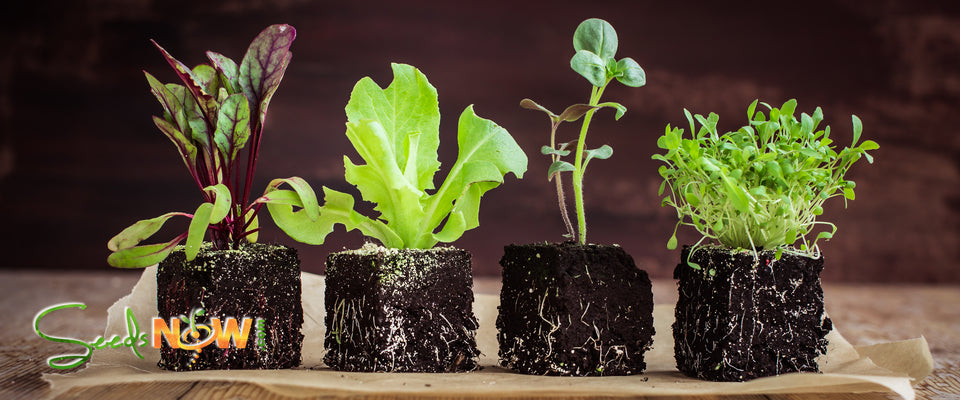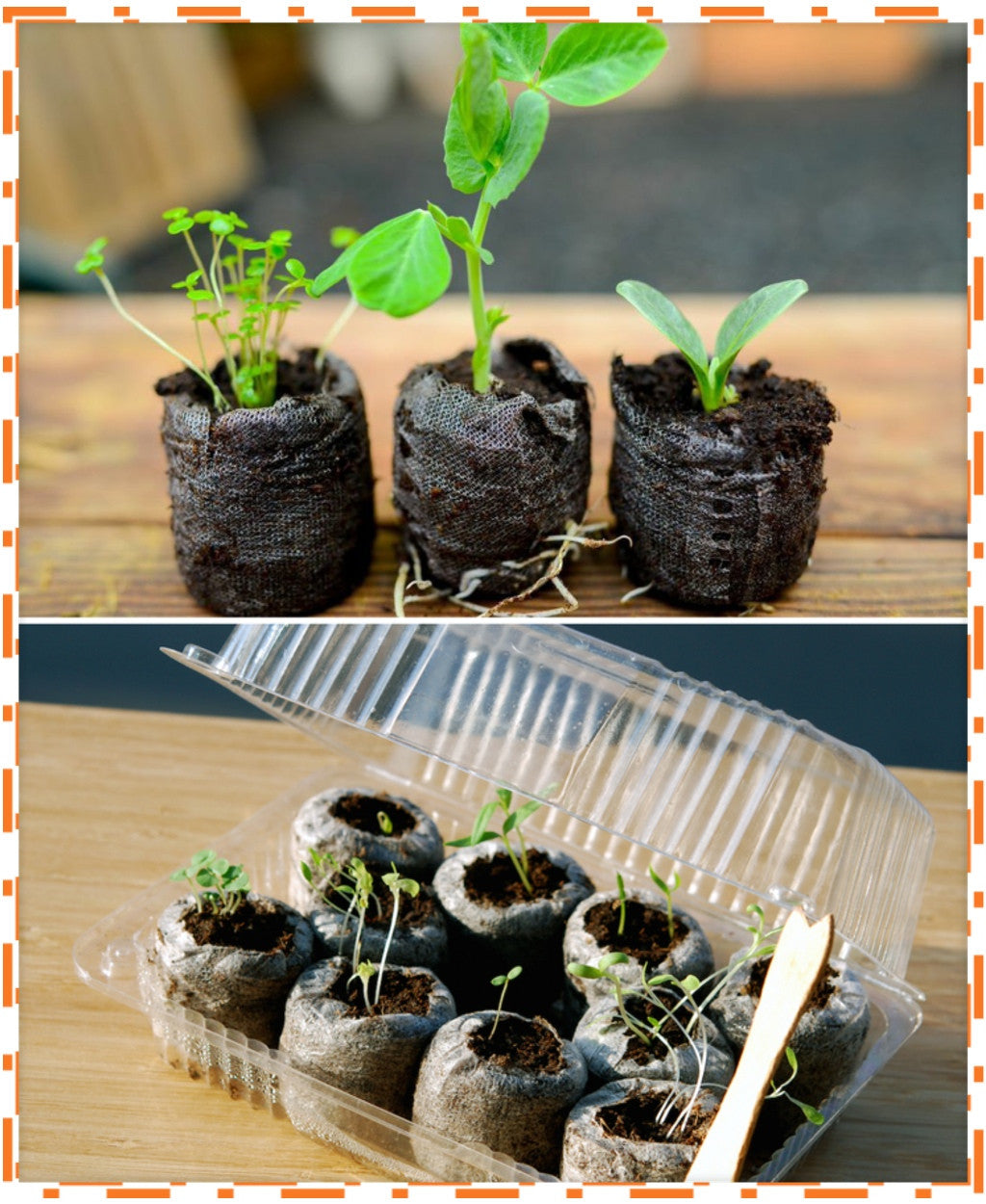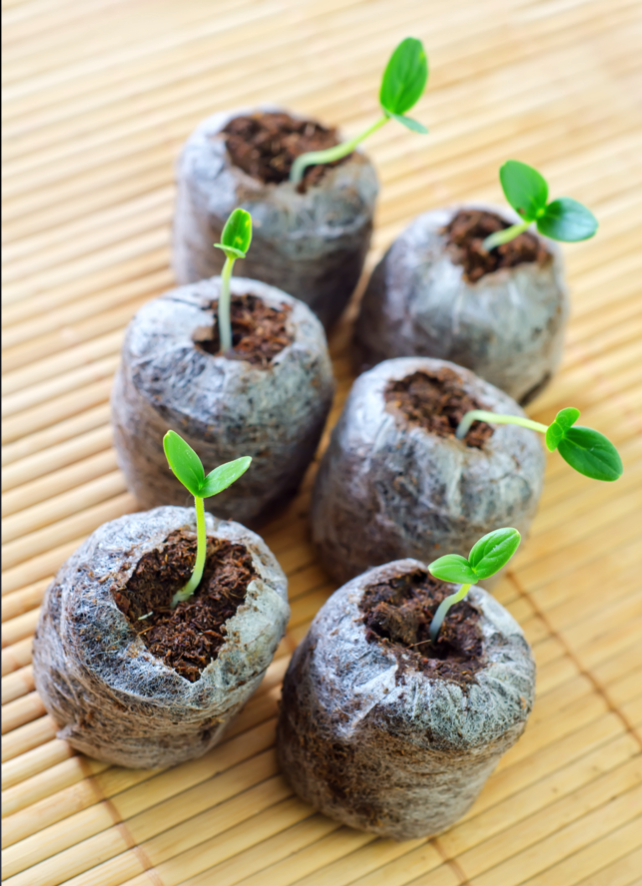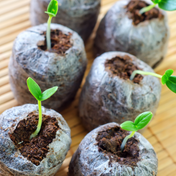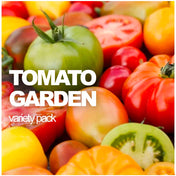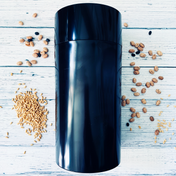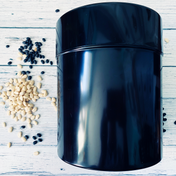This hard neck packs a punch! Strong, hot and full flavored, Svea is perfect for baking and is a favorite with chefs. Fat, purple streaked, easy to peel cloves per bulb. Thrives in colder climates, good storage.
- From $399 USDUnit price /Unavailable
Description
The Jade Bush Bean produces very sweet, tender 7" pods. These stringless beans grow on a strong plant, high off the ground for quick picking, and their deep green color makes them easy to spot among the leaves. This gem maintains production even in high temperatures.
- Easy to grow
- Stringless variety
- Sweet, tender 7" pods
- Tolerates high temperatures
SEED PLANTING TIPS
- Botanical name: Phaseolus vulgaris
- Depth to plant seeds: 1" deep
- Spacing between plants: 4" apart
- Spacing between rows: 18"-24" apart
- Days to germinate (sprout): 5-10 days
- Germination soil temps: 70F-85F
- Soil needs: 6.0-7.0 pH
- Sun needs: Full sun
- Frost hardy: No
- Planting season: Spring, summer, fall
- # of plants per sq. ft.: Appx. 4 plants per sq. ft.
- Days to maturity: 55-60 days
Click here to view our full Bean grow guide
Good companion plants: Cucumber, Pea, Rosemary, Thyme, Tomato
- From $399 USDUnit price /Unavailable
Description

The Contender Bush Bean (Phaseolus vulgaris) is one of the best tasting green beans, and it can tolerate the heat. An early and prolific producer, pods can grow 6"-8" long, and are slightly curved with a distinct flavor. This stringless variety is great for canning, freezing, or eating fresh from the garden.
- Easy to grow
- Stringless variety
- Matures quickly—50 days
- Heat tolerant
Shop all Bean Seeds Shop Good Companion Plants for Beans 📚 Grow Guide: Beans - From $399 USDUnit price /Unavailable
Description

The Borlotti Bush Bean (Phaseolus vulgaris) is an old Italian heirloom, also known as the Cranberry Bean. With its vibrant crimson streaks, the beautiful pods are easy to spot in the garden. Can be eaten as a green bean, or dried and used like its relative the kidney bean.
- Easy to grow
- High in fiber
- Matures quickly—55 days
- Good as a dried bean
Shop all Bean Seeds Shop Good Companion Plants for Beans 📚 Grow Guide: Beans - From $399 USDUnit price /Unavailable
Description

The Blue Lake Bush Bean (Phaseolus vulgaris) produces tender stringless pods that grow 5"-6" long. It's easy to grow and matures quickly. Excellent flavor with firm texture and rich colors. Beans mature all at once, making it an easy harvest.
- Stringless pods
- Easy to grow
- Matures quickly—55 days
- Medium 5"-6" pods
Shop all Bean Seeds Shop Good Companion Plants for Beans 📚 Grow Guide: Beans - From $399 USDUnit price /Unavailable
Description
Thai Basil has small sturdy leaves that hold up well to high-heat cooking, purple stems, and delicate, edible violet flower spikes that make the whole plant look like a lavender bush when allowed to fully bloom.The spicy clove-anise flavor brings an earthy essence to pesto, Thai curries, stir fries, citrus salads, and cocktails. Elegant in cut flower arrangements, too.
Harvest the leaves and stems from the top part of the plant, and pinch off edible flower buds as they appear, which prevents the leaves from turning bitter, and signals the plant to branch out and grow more leaves, making a bushier plant.
The more you harvest, the more it grows!
- Spicy clove-anise flavor
- Culinary, medicinal, and ornamental
- Good for indoor gardens
- Good for containers
- Tons of medicinal benefits!
As a medicinal herb, Basil has been used internally to treat anxiety, colds, colic, cough, depression, diarrhea, fever, flatulence, flu, indigestion, insomnia, intestinal parasites and worms, exhaustion, gastric pain, gonorrhea, lactation problems, migraine headache, nausea, stomach cramps, sore throat, and vomiting, and externally to treat acne, insect bites and stings, loss of smell, skin problems, snake bites.
⚠️ Do not use medicinally while pregnant.
⚠️ Medicinal properties are presented as information only, and are not a recommendation or prescription for use. Consult a medical professional before using any herb medicinally.
As a companion plant, it attracts hummingbirds, pollinators, and beneficial insects, and repels asparagus beetles, cabbage moths, cabbage white butterfly, cabbage worms, carrot rust fly, flies, maggots, mice, mosquitoes, spider mites, thrips, and tomato hornworms.Shop all Basil Seeds Shop Good Companion Plants for Basil 📚 Grow Guide: Basil 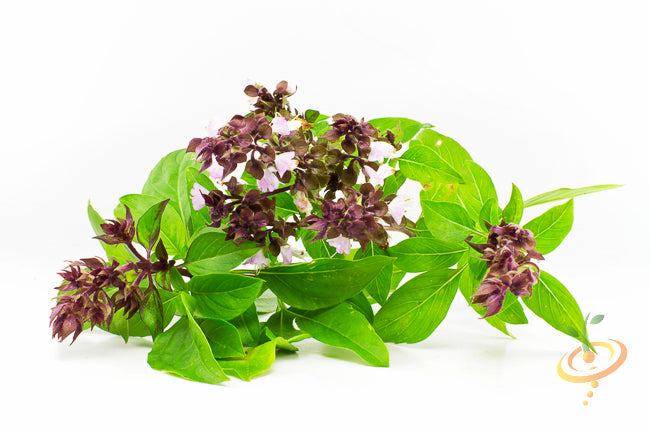
Thai Basil is very fragrant and one of the most available varieties of basil. It has beautiful purple stems with bright green leaves. It is used widely in soups and curries, and other traditional Thai dishes.
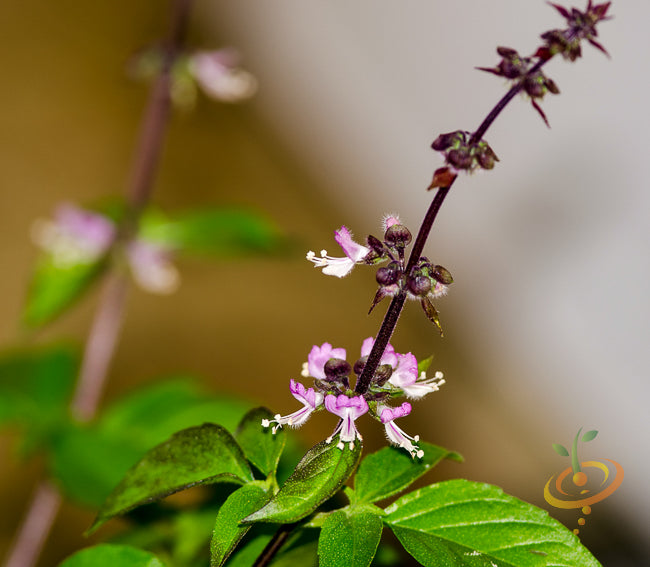
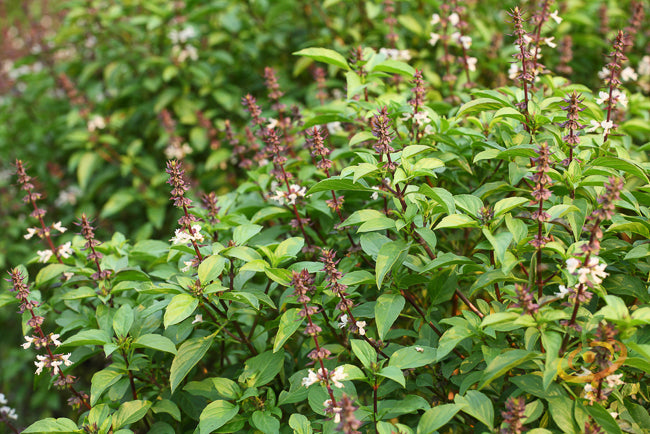
What is Thai Basil?Thai Basil exhibits narrow leaves, with gorgeous purple stems. Sometimes mauve or pink-ish flowers. It needs warm air and sun to do well. This is a wonderful basil to grow if you are a Thai food enthusiast! It is also known as the "holy herb" in many traditions all around the world.

Health Benefits of Thai Basil
Thai Basil is a wonderful blood coagulant, and plays a role in strengthening bones. It contains a ton of iron, vitamin A, and plenty of essential oils.

Ways to Consume Thai BasilUse Thai Basil as a condiment, or a enjoy it as an accompaniment to Pho'. It is slightly anise-flavored so it goes extremely well in soups and curries.

See Basil Recipes & Growing Tips on our Pinterest Board
Shop all Basil Seeds Shop Good Companion Plants for Basil 📚 Grow Guide: Basil - From $399 USDUnit price /Unavailable
Description
Red Velvet Leaf Basil is a delight for all of your senses. When you see the firm, smooth, deep burgundy leaves, you must touch them, which releases a divine anise fragrance that you have to nibble, and then you hear your own sigh of gratitude that this enchanting herb is growing in your garden, producing all summer long.Harvest the leaves and stems from the top part of the plant, and pinch off edible flower buds as they appear, which prevents the leaves from turning bitter, and signals the plant to branch out and grow more leaves, making a bushier plant.
The more you harvest, the more it grows!
- Rich basil flavor
- Culinary, medicinal, and ornamental
- Good for indoor gardens
- Good for containers
- Tons of medicinal benefits!
As a medicinal herb, Basil has been used internally to treat anxiety, colds, colic, cough, depression, diarrhea, fever, flatulence, flu, indigestion, insomnia, intestinal parasites and worms, exhaustion, gastric pain, gonorrhea, lactation problems, migraine headache, nausea, stomach cramps, sore throat, and vomiting, and externally to treat acne, insect bites and stings, loss of smell, skin problems, snake bites.
Works as well with garlic and tomato as it does with honey and fruit, and makes a rich herbal tea. Dress up a Lollo Rossa Lettuce salad with the edible amethyst flowers.
YIELD Do not use medicinally while pregnant.
YIELD Medicinal properties are presented as information only, and are not a recommendation or prescription for use. Consult a medical professional before using any herb medicinally.
As a companion plant, it attracts hummingbirds, pollinators, and beneficial insects, and repels asparagus beetles, cabbage moths, cabbage white butterfly, cabbage worms, carrot rust fly, flies, maggots, mice, mosquitoes, spider mites, thrips, and tomato hornworms.
Shop all Basil Seeds Shop Good Companion Plants for Basil 📚 Grow Guide: Basil  This Red Velvet Leaf Basil plant produces high yields of deed red-colored leaves that are very aromatic. It will produce continuously all season long, and grows perfect in containers.
This Red Velvet Leaf Basil plant produces high yields of deed red-colored leaves that are very aromatic. It will produce continuously all season long, and grows perfect in containers.

What is Red Velvet Leaf Basil?
This variety of basil boasts unusual reddish-purple leaves and has a stronger flavor than most other types. It is appealing in salads, and used often as a garnish. It's been known to repel mosquitoes too! You can raise this type of basil indoors in a sunny window or outdoors in areas with warm summers.
Health Benefits of Red Velvet Leaf Basil
Red Velvet Leaf Basil is packed with phyto-nutrients and health benefits. Rub crushed leaves on your skin to repel mosquitoes. It is a potent anti-oxidant with anti-inflammatory properties as well. This basil is an excellent source of iron and has been known to clear the mind and uplift the spirit.
Ways to Consume Red Velvet Leaf BasilTry Red Velvet Leaf Basil in your favorite salads, fruit jams, sauces, tea or paired with fresh fruit. Garlic flavors pair beautifully with this basil also.
See Basil Recipes & Growing Tips on our Pinterest Board
Shop all Basil Seeds Shop Good Companion Plants for Basil 📚 Grow Guide: Basil - From $399 USDUnit price /Unavailable
Description
Lime Basil is as fresh and uplifting as it sounds. The bright green leaves are infused with a zesty lime fragrance and tangy flavor that’s best used fresh in coconut-heavy Asian dishes, seafood dishes, fruit salads, limeade, cocktails, and salad dressings. Add at the end of cooking to preserve the citrus flavor, then garnish with the edible flowers.Harvest the leaves and stems from the top part of the plant, and pinch off edible flower buds as they appear, which prevents the leaves from turning bitter, and signals the plant to branch out and grow more leaves, making a bushier plant.
The more you harvest, the more it grows!
- Fresh, zesty lime-anise flavor
- Culinary and medicinal
- Good for indoor gardens
- Good for containers
- Tons of medicinal benefits!
As a medicinal herb, Basil has been used internally to treat anxiety, colds, colic, cough, depression, diarrhea, fever, flatulence, flu, indigestion, insomnia, intestinal parasites and worms, exhaustion, gastric pain, gonorrhea, lactation problems, migraine headache, nausea, stomach cramps, sore throat, and vomiting, and externally to treat acne, insect bites and stings, loss of smell, skin problems, snake bites.
⚠️ Do not use medicinally while pregnant.
⚠️ Medicinal properties are presented as information only, and are not a recommendation or prescription for use. Consult a medical professional before using any herb medicinally.
As a companion plant, it attracts hummingbirds, pollinators, and beneficial insects, and repels asparagus beetles, cabbage moths, cabbage white butterfly, cabbage worms, carrot rust fly, flies, maggots, mice, mosquitoes, spider mites, thrips, and tomato hornworms.
Shop all Basil Seeds Shop Good Companion Plants for Basil 📚 Grow Guide: Basil 
The Lime Basil plant is very easy to grow and smells extremely fragrant! It has an amazing lemon scent, perfect for homemade lemonade! Use this in all your favorite culinary creations! It grows to the perfect size for planting in containers, and the aroma of just passing by this herb, will take your senses on an enjoyable ride.
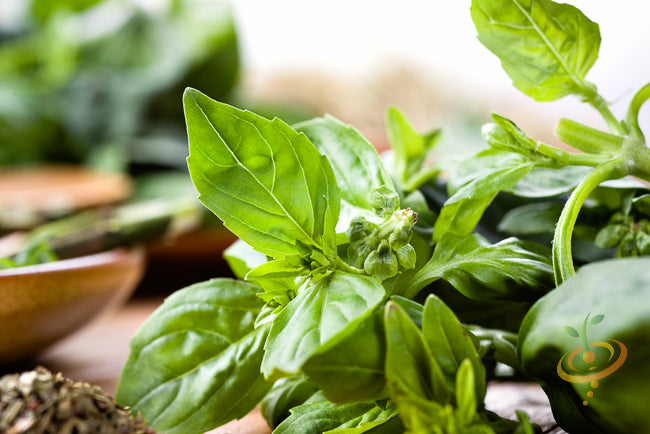
What is Lime Basil?
Lime Basil offers a crisp citrus flavor, with a zesty undertones. It grows as an annual herb with white or lavender flowers. It has many medicinal purposes which makes it an "all around great herb" to grow in your own gardens.
Health Benefits of Lime Basil
From treating some cancers, symptoms of stress, asthma and diabetes, Lime Basil is recognized widely as a medicinal herb.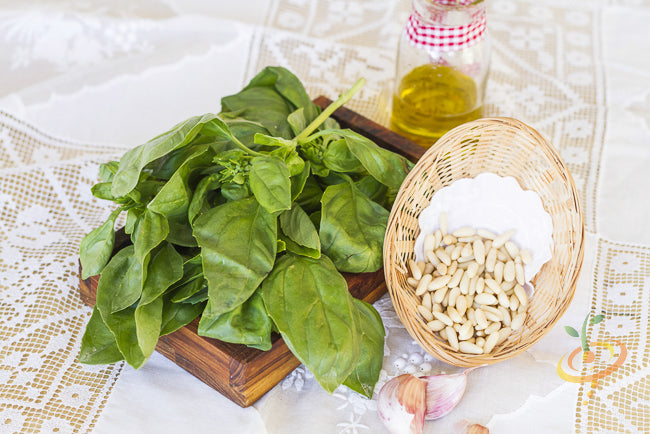
Ways to Consume Lime BasilUsed commonly in fresh cooked recipes, always add it at the last moment so that the cooking doesn't destroy the citrus flavor. It is a favorite ingredient in pesto, and used to thicken soups. Try it with fried chicken, or steeping it in milk to create lovely ice creams or chocolates. Don't toss the flower buds, they are full of flavor and are edible as well.
See Basil Recipes & Growing Tips on our Pinterest Board
Shop all Basil Seeds Shop Good Companion Plants for Basil 📚 Grow Guide: Basil - From $399 USDUnit price /Unavailable
Description
Licorice Basil is a type of Thai basil with a pleasant, sweet licorice flavor. Beautiful as a fragrant and ornamental accent throughout the garden, and delicious in salads, baked goods, and pasta sauce. It’s also pleasant to look at with deep green leaves that sometimes show a burgundy tinge, plum-colored stems, and lavender flower spikes that make a fun garnish for any salad, dish, or drink.Harvest the leaves and stems from the top part of the plant, and pinch off edible flower buds as they appear, which prevents the leaves from turning bitter, and signals the plant to branch out and grow more leaves, making a bushier plant.
The more you harvest, the more it grows!
- Sweet, pleasant licorice flavor
- Thai basil type
- Edible ornamental
- Good for containers
- Tons of medicinal benefits!
As a medicinal herb, Basil has been used internally to treat anxiety, colds, colic, cough, depression, diarrhea, fever, flatulence, flu, indigestion, insomnia, intestinal parasites and worms, exhaustion, gastric pain, gonorrhea, lactation problems, migraine headache, nausea, stomach cramps, sore throat, and vomiting, and externally to treat acne, insect bites and stings, loss of smell, skin problems, snake bites.
⚠️ Do not use medicinally while pregnant.
⚠️ Medicinal properties are presented as information only, and are not a recommendation or prescription for use. Consult a medical professional before using any herb medicinally.
As a companion plant, it attracts hummingbirds, pollinators, and beneficial insects, and repels asparagus beetles, cabbage moths, cabbage white butterfly, cabbage worms, carrot rust fly, flies, maggots, mice, mosquitoes, spider mites, thrips, and tomato hornworms.
Shop all Basil Seeds Shop Good Companion Plants for Basil 📚 Grow Guide: Basil 
This basil variety produces lovely and flavorful green leaves with purple accents. It has a strong, but enjoyable licorice flavor and can grow up to 24" tall.

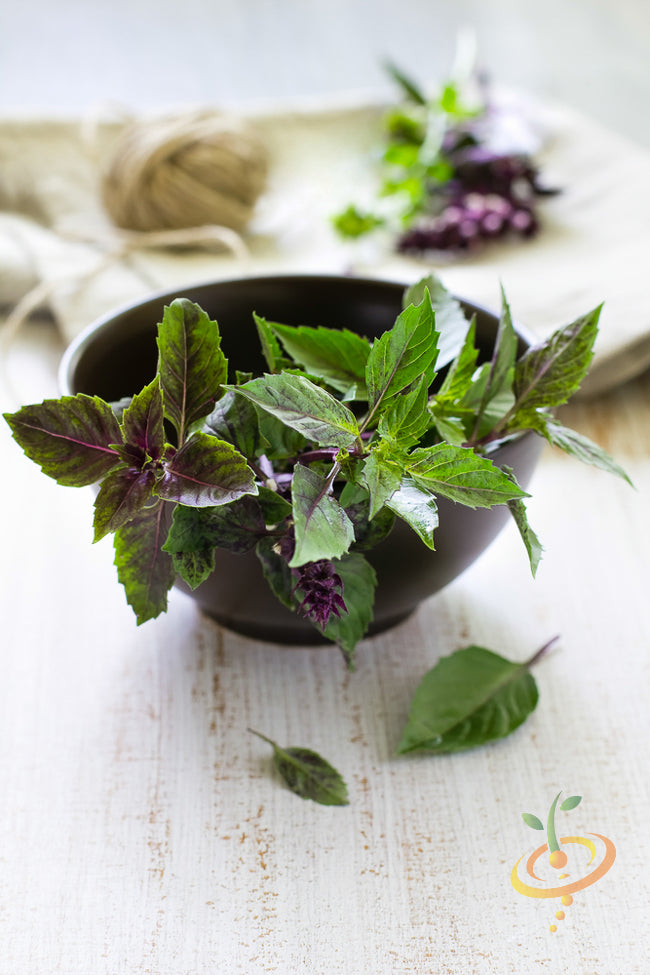
What is Licorice Basil?
This basil is a type of Thai Basil, also known as anise basil. It has strong licorice and anise flavors, qualities and aromatics. It's known to be slightly "lanky" with pointed green leaves with signature purple flowers. Both the leaves and flowers are edible on this plant.
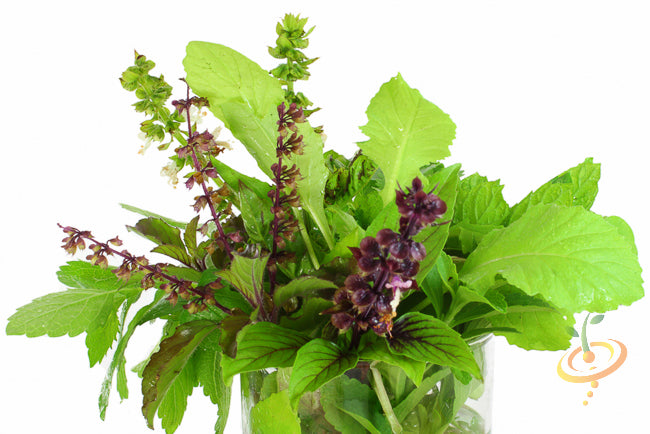
Health Benefits of Licorice Basil
Licorice Basil can be used for treating the common cold, the flu, diabetes, asthma, bronchitis, earaches, headaches, upset stomachs, heart disease, fever, and more. It promotes longevity but something you may not know is that its an excellent mosquito repellent!

Ways to Consume Licorice BasilWhen Licorice Basil leaves are crushed, they burst with intense basil and licorice aromas. Fragrant and floral, the spicy paste is a condiment for multiple dishes. This basil is best when mixed with other ingredients to tame it's powerful one-dimensional notes.

See Basil Recipes & Growing Tips on our Pinterest Board
Shop all Basil Seeds Shop Good Companion Plants for Basil 📚 Grow Guide: Basil - From $399 USDUnit price /Unavailable
Description
Italian Large Leaf Basil has soft, crinkled, bright green 2"-4" leaves, and a sweeter flavor than the Genovese Basil.Aromatic and delicious, use it to flavor herbal tea, herb butter, oil, vinegar, pasta and pizza sauce, antipasto, smoothies, curries, cocktails, Caprese salad, dressing, and pesto. The edible flower spikes make a beautiful garnish. Reliable producer and all-around great Italian basil.
Harvest the leaves and stems from the top part of the plant, and pinch off edible flower buds as they appear, which prevents the leaves from turning bitter, and signals the plant to branch out and grow more leaves, making a bushier plant.
The more you harvest, the more it grows!
- Sweet and spicy with less clove
- Genovese type
- Grows 1'-2' tall
- Good for containers
- Tons of medicinal benefits!
As a medicinal herb, Basil has been used internally to treat anxiety, colds, colic, cough, depression, diarrhea, fever, flatulence, flu, indigestion, insomnia, intestinal parasites and worms, exhaustion, gastric pain, gonorrhea, lactation problems, migraine headache, nausea, stomach cramps, sore throat, and vomiting, and externally to treat acne, insect bites and stings, loss of smell, skin problems, snake bites.
YIELD Do not use medicinally while pregnant.
YIELD Medicinal properties are presented as information only, and are not a recommendation or prescription for use. Consult a medical professional before using any herb medicinally.
As a companion plant, Basil attracts hummingbirds, pollinators, and beneficial insects, and repels asparagus beetles, cabbage moths, cabbage white butterfly, cabbage worms, carrot rust fly, flies, maggots, mice, mosquitoes, spider mites, thrips, and tomato hornworms.
Shop all Basil Seeds Shop Good Companion Plants for Basil 📚 Grow Guide: Basil

The Italian Large Leaf Basil plant will produce medium to large leaves that can measure up to 4" long! It is of heirloom variety and is extremely fragrant and used widely in the culinary industry. If you're a lover of basil, this would be a good variety to plant in your garden.

What is Italian Large Leaf Basil?
Italian Large Leaf Basil is an annual plant that will produce edible and fragrant leaves, flowers, and continue to put off a few more leaves through the process of ending it's life cycle. This basil grows well in "filtered light" (meaning near a bright window or under a tree), and it grows best in 50-90 degree weather. Warm, but not too warm.

Health Benefits of Italian Large Leaf BasilItalian Large Leaf Basil has anti-bacterial properties and anti-inflammatory effects. It's been known to help people with inflammatory health problems like arthritis or IBS. Basil also contains properties that mimic food preservatives so it makes good sense to try and include more basil into the foods you prepare at home. Basil will help naturally preserve them so they'll be safer, longer. Basil also contains all the good stuff needed for better cardiovascular health.

Ways to Consume Large Leaf Italian Basil
Use this variety of basil in your favorite Neapolitan cuisine dishes! Use the extra large leaves, fresh or dried, in tomato dishes, pasta sauces, vegetable dishes and soups.


See Basil Recipes & Growing Tips on our Pinterest Board
Shop all Basil Seeds Shop Good Companion Plants for Basil 📚 Grow Guide: Basil - From $399 USDUnit price /Unavailable
Description
Genovese Basil, also called Sweet Basil, has large, tender, fragrant leaves and sweet, spicy anise flavor. The best basil for pesto. The flower spikes dotted with tiny white edible flowers make a delicate garnish or salad addition. This heat-loving herb is a reliable producer and all-around great Italian basil.
Genovese Basil is a classic! It's prized for being sweet with undertones of a spicy flavor. You can't beat its aroma. These plants grow anywhere from 18"-24" inches and is the variety of choice for making pesto and adding to pizzas.Use it in pesto, pasta and pizza sauce, Caprese salad, antipasto, curries, cocktails, smoothies, dressing, herb butter, oil, vinegar, and herbal tea.
Harvest the leaves and stems from the top part of the plant, and pinch off edible flower buds as they appear, which prevents the leaves from turning bitter, and signals the plant to branch out and grow more leaves, making a bushier plant.
The more you harvest, the more it grows!
- Sweet and spicy
- Grows 2'-3' tall
- Besto for pesto
- Good for containers
- Tons of medicinal benefits!
As a medicinal herb, Basil has been used internally to treat anxiety, colds, colic, cough, depression, diarrhea, fever, flatulence, flu, indigestion, insomnia, intestinal parasites and worms, exhaustion, gastric pain, gonorrhea, lactation problems, migraine headache, nausea, stomach cramps, sore throat, and vomiting, and externally to treat acne, insect bites and stings, loss of smell, skin problems, snake bites.
⚠️ Do not use medicinally while pregnant.
⚠️ Medicinal properties are presented as information only, and are not a recommendation or prescription for use. Consult a medical professional before using any herb medicinally.
As a companion plant, it attracts hummingbirds, pollinators, and beneficial insects, and repels asparagus beetles, cabbage moths, cabbage white fly, cabbage worms, carrot rust fly, flies, maggots, mice, mosquitoes, spider mites, thrips, and tomato hornworms.
Shop all Basil Seeds Shop Good Companion Plants for Basil 📚 Grow Guide: Basil 
What is Genovese Basil?
The most commonly used basil variety for making pesto, you can harvest these leaves as soon as they are large enough to consume. Genovese basil is also known as "Sweet Basil" and a common ingredient to all Italian dishes. The leaves are spoon shaped, glossy and a dark green shade. It grows best in organic-rich and well drained soil and is an easy to grow annual herb that thrives in areas that remain above 50 degrees Fahrenheit.

Health Benefits of Genovese BasilGenovese basil is a known health tonic for expecting mothers and when mixed with tea it increases lactation in mothers. It is also a nerve tonic and young children are sometimes encouraged to chew on the leaves of basil because it stimulates brain cells and can increase memory.

Ways to Consume Genovese BasilThe most popular use is in italian dishes and sauces, especially in genovese sauce and pesto. Genovese Basil goes great in caprese salads and on raw tomatoes for a light, healthy "summery" treat. Mix basil leaves with olive oil and freeze in ice-cube trays for flavored oils when cooking.

See Basil Recipes & Growing Tips on our Pinterest Board
Shop all Basil Seeds Shop Good Companion Plants for Basil 📚 Grow Guide: Basil Basil, Cinnamon (Mexican Basil)
From $399 USDUnit price /UnavailableDescription
Cinnamon Basil, also called Mexican Basil, has glossy, deep green leaves that turn reddish at the tips when mature, and dark cinnamon-colored stems. Its warm, sweet cinnamon-anise flavor is especially nice in ham and pork dishes, apple pie and other desserts, and kombucha.
By far the most popular variety and possibly one of the most fragrant, this basil grows easily. Its aroma will remind you of sweet cinnamon and it is popular for use in hot drinks and paired with fresh fruit.
This sweet basil is exotic and has dark green leaves with purplish-red stems and purple blooms. It's spicy and has a cinnamon-like taste and scent. If you like making homemade potpourris or dried flower arrangements try adding some cinnamon basil!The violet flower spikes make an unusual garnish or addition to salads. Harvest the leaves and stems from the top part of the plant, and pinch off edible flower buds as they appear, which prevents the leaves from turning bitter, and signals the plant to branch out and grow more leaves, making a bushier plant.
The more you harvest, the more it grows!
- Cinnamon-anise flavor
- Tons of medicinal benefits!
- Good for indoor gardens
- Good for containers
As a medicinal herb, Basil has been used internally to treat anxiety, colds, colic, cough, depression, diarrhea, fever, flatulence, flu, indigestion, insomnia, intestinal parasites and worms, exhaustion, gastric pain, gonorrhea, lactation problems, migraine headache, nausea, stomach cramps, sore throat, and vomiting, and externally to treat acne, insect bites and stings, loss of smell, skin problems, snake bites.
⚠️ Do not use medicinally while pregnant.
⚠️ Medicinal properties are presented as information only, and are not a recommendation or prescription for use. Consult a medical professional before using any herb medicinally.
Plant Basil in your garden to attract hummingbirds, pollinators, and other beneficial insects.
Basil is also know to repel aphids, asparagus beetles, cabbage moths, cabbage white butterfly, cabbage worms, carrot rust fly, flies, maggots, mice, mosquitoes, spider mites, thrips, and tomato hornworms!
Shop all Basil Seeds Shop Good Companion Plants for Basil 📚 Grow Guide: Basil Health Benefits of Cinnamon Basil
Cinnamon basil is a must have, medicinal herb. It offers anti-inflammatory benefits and can relieve symptoms of arthritis! If you suffer from allergies, diabetes, colds, the flu, or infertility, some would swear by the benefits of consuming cinnamon basil and how it's improved their health. It is even used in the treatment of some cancers. It naturally boosts your immune system and is a known anti-bacterial and anti-viral. Are you growing this yet?...because you should be!
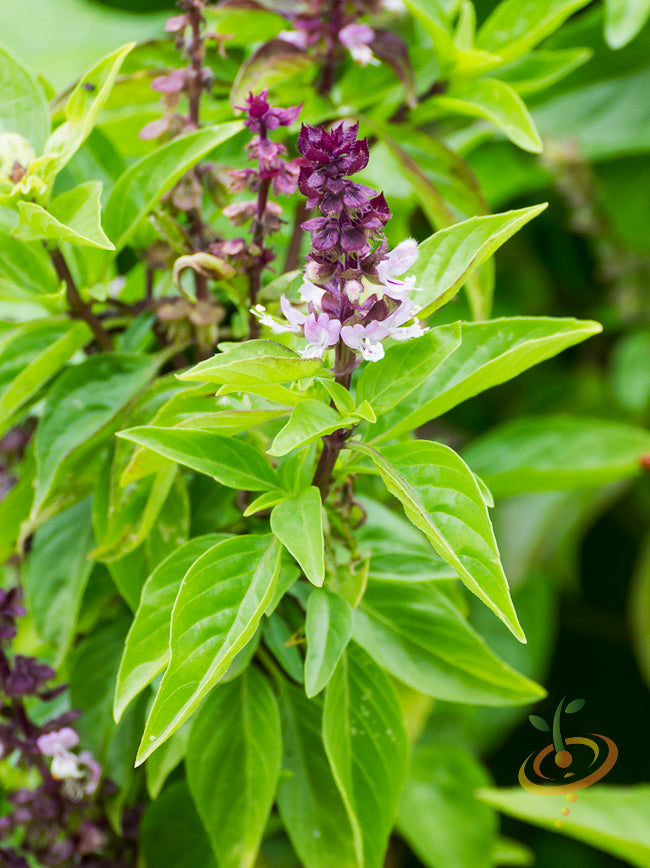
Ways to Consume Cinnamon BasilUse this exotic and fragrant basil in any recipe that calls for basil. The sweet flavor is great when paired with other fruity herbs. Pick the leaves when small and tender and use them in your favorite recipes or put them in bottles of olive oil to make cinnamon flavored oil. Cinnamon basil pairs harmoniously with apple pie filling, apple sauce, pork or ham dishes. Add frozen basil leaves to soups or sauces. Cinnamon basil can also be used to make refreshing teas, hot or cold!
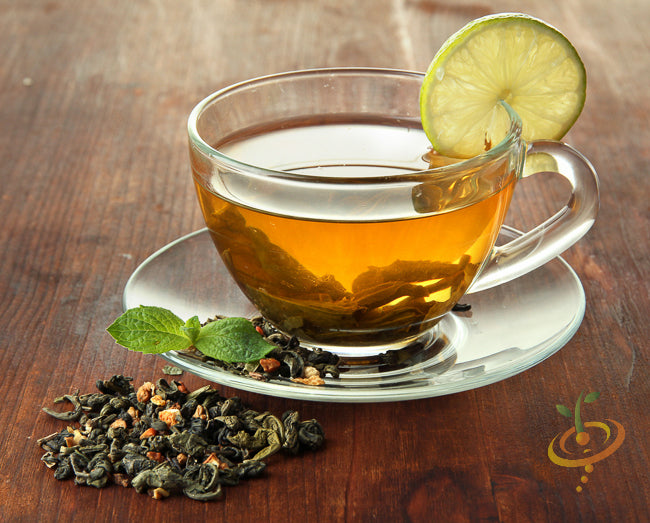

See Basil Recipes & Growing Tips on our Pinterest Board
Shop all Basil Seeds Shop Good Companion Plants for Basil 📚 Grow Guide: Basil Asparagus - Mary Washington (Seeds)
From $399 USDUnit price /UnavailableDescription

The Mary Washington Asparagus is a popular old heirloom variety that produces vigorous, uniform spears with a sweet, nutty flavor. Asparagus plants are perennials that can easily produce for 20+ years, so give this vegetable a permanent and sunny spot in your garden. To ensure many years of future production, wait until the second year to cut and consume the spears.
- Early producer
- Cold hardy, but protect from frost
- Easy to care for, once established
- Beautiful fern-like foliage lingers after harvest
Asparagus can be considered a power food among veggies. It is packed with vitamins and minerals, delivering a more complete balance than any other. Asparagus is a good source of vitamin A, B6 and C, as well as iron, potassium, riboflavin, niacin, and thiamine. It is high in fiber and low in carbohydrates, contains no fat, no cholesterol and has only 20 calories per 1/2 cup serving.
An established bed of 25 asparagus plants will produce about 10 pounds of asparagus per year.
• Shop all Asparagus (seeds)
• Shop all Asparagus (roots)
Shop Good Companion Plants for Asparagus 📚 Grow Guide: Asparagus - From $399 USDUnit price /Unavailable
Description

Roquette Arugula (also called Rocket) is one of the easiest leafy greens you can grow, and can be harvested as early as 20 days after planting. The young seed pods, flowers, leaves, and mature seeds are all edible. A member of the mustard family, the leaves of the Arugula plant add a deliciously tangy/peppery flavor to any meal.
- Easy to grow
- Entire plant is edible
- Frost tolerant
- Quick to mature — 20 days for baby greens!
Shop all Arugula Seeds Shop Good Companion Plants for Arugula 📚 Grow Guide: Arugula - From $399 USDUnit price /Unavailable
Description

The Green Globe Artichoke produces a large, delicious green flower bud that opens into a purple thistle if left to flower. Choose a sunny spot in your garden with lots of room for this plant to grow. Artichokes are perennial plants that keep coming back bigger and more productive every year. For a dramatic difference in color, try growing the Violet Star Artichoke.- Drought tolerant
- Heat tolerant
- Usually produces in 2nd year
- Perennial
- From $399 USDUnit price /Unavailable
Description
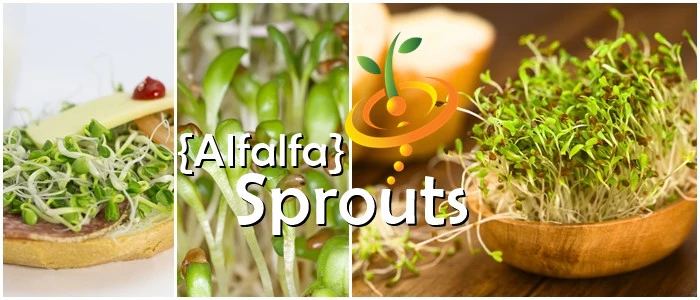
Organic
- Alfalfa is one of the healthiest and easiest sprouts you can grow!
- Extremely high in protein, calcium, plus other minerals and vitamins in the B group, vitamin C, vitamin E, and vitamin K.
- Alfalfa is extremely easy to grow.
- All organic. All natural.
- If you like Alfalfa sprouts, make sure to check out Red Clover sprouts.
- Looking for an All-in-1 kit? Check out this All-in-1 Seed Sprouting Kit + Mason Jar.

How to Grow Sprouts
The easiest method is to grow sprouts in a Mason jar. To provide plenty of fresh air, cover the top with the mesh screen.
Step One: Soaking
For a quart-sized jar, put 1 ½ to 2 tablespoons of small seeds (up to 1 cup if using larger seeds like green peas or garbanzo) in the sprouting jar. Cover top of jar with cloth or sprouting lid and rinse the seeds in warm (not hot) water. Drain and refill so that water is about an inch above the seeds. Let the seeds soak 8-12 hours (overnight). Protect from light by covering with a dish towel or placing in a cupboard.
Step Two: Rinsing
Rinse 2 to 3 times per day for 2 to 3 days. After thoroughly draining the rinse water, lay the jar on its side to spread out the seeds. Do not expose to light. After 2 to 3 days the sprouts should be filling up the jar.
Things to Remember:1. Rinse often (2-3 times/day).
2. Keep them moist, not wet.
3. Keep them at room temperature.
4. Give them air to breathe.
5. Don't grow too many in one container.
6. Keep them in a dark place.
- Alfalfa is one of the healthiest and easiest sprouts you can grow!
Evening Primrose, Showy Pink Ladies Flowers
From $329 USDUnit price /UnavailableDescription
SEED PLANTING TIPS
- Botanical name: Oenothera speciosa
- Hardiness zones: 4-9
- Planting season: Spring, summer
- Days to maturity: 2nd year
- Cold stratify: Yes
- Depth to plant seeds: Lightly cover - seeds need light to germinate
- Spacing between plants: 12"-18" apart
- Days to germinate (sprout): 15-30 days
- Germination soil temps: 65F-70F
- Soil types: Sandy, loamy, rich, well-drained
- Soil pH: 5.5-7.5
- Water needs: Average
- Sun needs: Full sun, part shade
- Frost tolerant: No
- Drought tolerant: Yes
- Deer resistant: Yes
Hollyhock, Summer Carnival Mix Flowers
From $329 USDUnit price /UnavailableDescription
This Summer Carnival Mix (Alcea rosea) produces towering spikes that can grow to 9' tall with saucer-sized blooms in all sorts of different colors.
Heat and cold-tolerant, this biennial blooms its first year. Prefers full sun, but can tolerate part shade, even under a Black Walnut tree. The leaves, buds, and petals are edible.
- Life cycle: Biennial
- Bloom season: Summer, fall
- Attracts: Birds, hummingbirds, bees, butterflies, and other pollinators
- Flower meaning: Abundance, ambition, femininity, fertility, fruitfulness
SEED PLANTING TIPS
- Botanical name: Alcea rosea
- Hardiness zones: 2-10
- Planting season: Summer, fall
- Days to maturity: 2nd year
- Cold stratify: Yes
- Depth to plant seeds: Lightly cover - seeds need light to germinate
- Depth to plant seeds: Surface sow
- Spacing between plants: 18"-36" apart
- Days to germinate (sprout): 10-21 days
- Germination soil temps: 60F-70F
- Soil types: Sandy, loamy, chalky, rich, moist, well-drained
- Soil pH: 6.0-8.0
- Water needs: Average
- Sun needs: Full sun, part shade
- Frost tolerant: Yes
- Drought tolerant: Yes
- Deer resistant: Yes
Squash (Winter) - Long Island Cheese
From $325 USDUnit price /UnavailableDescription
 Squash (Winter), Long Island Cheese (100% Heirloom/Non-Hybrid/Non-GMO)
Squash (Winter), Long Island Cheese (100% Heirloom/Non-Hybrid/Non-GMO)-
The Long Island Cheese squash plant produces excellent yields of 10 pound squash resembling a wheel of cheese.
- Grows as a vine (not as a bush)
- Popular heirloom variety passed down for many generations
- The orange flesh is very sweet and can be used for making pie during the autumn months
- Widely grown by people all across New York and New Jersey - Day to Maturity | 100 days
- Best Months to Plant | [March - June] Winter squash love the sun and can't get enough of it. They need about 3 months of warm temperature and one additional month of cooler temps to fully mature.


-
The Long Island Cheese squash plant produces excellent yields of 10 pound squash resembling a wheel of cheese.
- From $299 USDUnit price /Unavailable
Description
Upland cress (Barbarea verna), also known as land cress, is a perennial plant belonging to the mustard family (Brassicaceae). This leafy green is often cultivated for its peppery flavor and nutritional benefits, making it a valuable addition to home gardens. Upland cress is particularly well-suited for cooler climates, thriving in temperatures ranging from 50°F to 70°F (10°C to 21°C).
One of the notable characteristics of upland cress is its rapid growth rate. Under optimal conditions, seeds can germinate within 7 to 14 days, and the plant can be harvested as early as 30 days after sowing. This quick turnaround makes it an attractive option for gardeners seeking to maximize their yield in a short growing season.
Upland cress is rich in vitamins A and C, as well as minerals such as calcium and iron. Studies have shown that leafy greens like upland cress can contribute to a balanced diet, providing essential nutrients that support overall health. In fact, a 100-gram serving of upland cress can contain approximately 90 mg of vitamin C, which is about 100% of the recommended daily intake for adults.
In terms of cultivation, upland cress prefers well-drained, fertile soil with a pH level between 6.0 and 7.0. It can be sown directly into the garden or started indoors and transplanted. The plant benefits from consistent moisture, and regular watering is essential, especially during dry spells. Mulching can help retain soil moisture and suppress weeds, which can compete for nutrients.
Upland cress can be susceptible to pests such as aphids and flea beetles. Implementing integrated pest management strategies, such as introducing beneficial insects or using organic insecticidal soaps, can help mitigate these issues. Additionally, crop rotation is recommended to prevent soil-borne diseases and maintain soil health.
Harvesting upland cress can be done by cutting the leaves just above the crown of the plant. This method encourages new growth and allows for multiple harvests throughout the growing season. The leaves can be used fresh in salads, sandwiches, or as a garnish, and they can also be cooked similarly to spinach.
In conclusion, upland cress is a versatile and nutritious plant that can enhance both the garden and the diet. Its rapid growth, ease of cultivation, and health benefits make it a worthwhile addition for gardeners looking to diversify their vegetable offerings. By understanding its requirements and potential challenges, gardeners can successfully incorporate upland cress into their gardening practices.
- From $299 USDUnit price /Unavailable
Description
Phacelia is also valued for its ability to improve soil health. As a cover crop, it can be sown in the off-season to prevent soil erosion and suppress weeds. The deep taproots of Phacelia help to break up compacted soil, enhancing aeration and water infiltration. Furthermore, when the plant decomposes, it adds organic matter to the soil, enriching it with nutrients that are beneficial for subsequent crops.
Tomato - Sunray (Indeterminate)
From $299 USDUnit price /UnavailableDescription
The Sunray tomato plant, known for its vibrant yellow fruit, is a popular choice among gardeners seeking to diversify their vegetable gardens. This cultivar is characterized by its high yield and robust growth, making it suitable for both novice and experienced gardeners. The Sunray tomato is classified as an indeterminate variety, which means it continues to grow and produce fruit throughout the growing season until killed by frost.
One of the notable features of the Sunray tomato plant is its ability to thrive in a variety of soil types, although it prefers well-drained, loamy soil enriched with organic matter. The optimal pH range for growing Sunray tomatoes is between 6.0 and 6.8. This range promotes nutrient availability and enhances overall plant health. Regular soil testing can help gardeners maintain the appropriate pH and nutrient levels, ensuring optimal growth conditions.
In terms of sunlight requirements, the Sunray tomato plant thrives in full sun, requiring at least 6 to 8 hours of direct sunlight each day. This exposure is crucial for the photosynthesis process, which is vital for fruit development. Insufficient sunlight can lead to stunted growth and reduced fruit production. Therefore, selecting an appropriate location in the garden that receives ample sunlight is essential for successful cultivation.
Watering practices also play a significant role in the health of the Sunray tomato plant. Consistent moisture is necessary, particularly during the fruiting stage. However, overwatering should be avoided, as it can lead to root rot and other fungal diseases. A general guideline is to provide about 1 to 1.5 inches of water per week, adjusting based on rainfall and soil moisture levels. Mulching around the base of the plant can help retain soil moisture and suppress weed growth.
Fertilization is another critical aspect of growing Sunray tomatoes. A balanced fertilizer with equal parts nitrogen, phosphorus, and potassium is recommended during the early stages of growth. As the plant begins to flower, a fertilizer higher in phosphorus can promote better fruit set and development. It is advisable to follow the manufacturer's instructions regarding application rates and timing to avoid nutrient burn.
Pest management is essential for maintaining the health of the Sunray tomato plant. Common pests include aphids, whiteflies, and tomato hornworms. Integrated pest management (IPM) strategies, such as introducing beneficial insects, using insecticidal soaps, and practicing crop rotation, can effectively control pest populations while minimizing chemical use.
In conclusion, the Sunray tomato plant is a valuable addition to any garden, offering both aesthetic appeal and culinary benefits. By understanding its growth requirements and implementing best practices in cultivation, gardeners can enjoy a bountiful harvest of flavorful tomatoes throughout the growing season.
SEED PLANTING TIPS
- Botanical name: Solanum lycopersicum
- Growth type: Indeterminate, trellis support, regular pruning
- Tomato size: Medium
- Depth to plant seeds: .25" deep
- Spacing between plants: 24" apart
- Spacing between rows: 36"-48" apart
- Days to germinate (sprout): 7-14 days
- Germination soil temps: 75F-95F
- Soil needs: 6.0-6.5 pH
- Sun needs: Full sun
- Frost hardy: No
- Planting season: Spring, summer
- # of plants per sq. ft.: Appx. 1 plant per 2 sq. ft.
- Days to maturity: 75-80 days
Click here to view our full Tomato grow guide
Good companion plants: Basil, Borage, Onion, Parsley, Pepper
- From $299 USDUnit price /Unavailable
Description
The Summer Max Cover Crop Seed Mix is a carefully formulated blend designed to enhance soil health and promote sustainable gardening practices. This mix includes a variety of species that thrive in warmer temperatures, providing numerous benefits to the garden ecosystem.
One of the primary advantages of using a cover crop mix is its ability to improve soil structure. The roots of the plants in the mix penetrate the soil, creating channels that enhance aeration and water infiltration. Studies have shown that cover crops can increase soil organic matter by up to 1% per year, which is significant for long-term soil fertility.
Additionally, the Summer Max Cover Crop Seed Mix contributes to nutrient cycling. As the plants grow, they absorb nutrients from the soil, which are then returned to the soil when the plants decompose. This process can reduce the need for synthetic fertilizers, promoting a more organic approach to gardening.
Another key benefit of this cover crop mix is its ability to suppress weeds. The dense growth of the cover crops shades the soil, limiting the sunlight available for weed seeds to germinate. Research indicates that cover crops can reduce weed populations by as much as 70%, thereby minimizing competition for resources among desired plants.
Furthermore, the Summer Max Cover Crop Seed Mix can enhance biodiversity in the garden. By planting a mix of species, gardeners can attract beneficial insects and pollinators, which play a crucial role in maintaining a healthy ecosystem. Increased biodiversity can lead to improved pest management, as natural predators help control pest populations.
It is essential to consider the timing and management of cover crops. The Summer Max Cover Crop Seed Mix is typically sown in late spring or early summer, allowing it to establish before the heat of summer sets in. Proper management practices, such as mowing or terminating the cover crops before planting the main crop, are vital to ensure that the benefits of the cover crops are fully realized.
In conclusion, the Summer Max Cover Crop Seed Mix offers a range of benefits for gardeners looking to improve soil health, suppress weeds, and promote biodiversity. By incorporating this mix into their gardening practices, individuals can contribute to a more sustainable and productive gardening environment.
- From $299 USDUnit price /Unavailable
Description
The Pixie Delight Lupine variety (Lupinus Hartwegll) is a fast growing annual native to Mexico. It’s in the legume family, so it fixes nitrogen in the soil and is a great companion plant or cover crop for the vegetable garden. Produces dense spires of pastel pink, blue, purple, and white tips. Grows 2'-4' tall on sturdy stems with daisy-like palmate foliage. Put a few in a pot or plant in wide bands for a striking effect.
If consumed in large quantities, seeds can be toxic to people, pets, and livestock.
- Life cycle: Annual
- Bloom season: Spring, summer
- Attracts: Hummingbirds, birds, bees, butterflies, and other pollinators
- Flower meaning: Abundance, change, growth
SEED PLANTING TIPS
- Botanical name: Lupinus succulentus
- Hardiness zones: 3-7
- Planting season: Spring, fall
- Days to maturity: 1st to 2nd year
- Cold stratify: No
- Depth to plant seeds: Lightly cover - seeds need light to germinate
- Spacing between plants: 12"-24" apart
- Days to germinate (sprout): 15-75 days
- Germination soil temps: 55F-70F
- Soil types: Clay, sandy, loamy, rocky, moist, well-drained
- Soil pH: 6.1-7.8
- Water needs: Average
- Sun needs: Full sun, part shade
- Frost tolerant: Yes
- Drought tolerant: Yes
- Deer resistant: Yes
Cosmos, Yellow Sulphur Flowers
From $299 USDUnit price /UnavailableDescription
Yellow sulphur cosmos, also known as Cosmos sulphureus, are vibrant and easy-to-grow flowers that can add a pop of color to any garden. If you're looking to brighten up your outdoor space with these stunning blooms, here's everything you need to know about growing yellow sulphur cosmos in your garden.
Yellow sulphur cosmos are annual flowers that belong to the Asteraceae family. They are native to Mexico and Central America but are now popular in gardens around the world. These flowers are known for their bright yellow blooms that attract butterflies and other pollinators.
Aside from their stunning appearance, yellow sulphur cosmos offer several benefits to your garden. They attract pollinators like butterflies and bees, helping to support local ecosystems. These flowers also make excellent cut flowers, adding a burst of color to floral arrangements.
Zinnia, Cherry Queen Flowers seeds
From $299 USDUnit price /UnavailableDescription
The Cherry Queen Zinnia (Zinnia elegans) is a vibrant and popular flowering plant known for its striking appearance and ease of cultivation. This annual flower is characterized by its large, daisy-like blooms that can reach up to 4 inches in diameter. The Cherry Queen variety showcases a rich, cherry-red color that can add a bold splash to any garden setting.
These flowers thrive in full sun and are well-suited for USDA hardiness zones 3 to 10. They prefer well-drained soil and can tolerate drought conditions once established, making them an excellent choice for gardeners looking for low-maintenance options. Zinnias are also known for their ability to attract pollinators, such as bees and butterflies, contributing to the overall health of the garden ecosystem.
In terms of growth, Cherry Queen Zinnias typically reach a height of 24 to 36 inches. They can be planted directly in the garden after the last frost or started indoors and transplanted later. The seeds germinate quickly, usually within 7 to 10 days, and the plants bloom from mid-summer until the first frost, providing a long-lasting display of color.
Cherry Queen Zinnias are also valued for their cut flower potential. The sturdy stems and vibrant blooms make them ideal for floral arrangements, and they can last up to a week in a vase when properly cared for. This versatility makes them a favorite among both home gardeners and professional florists.
In summary, the Cherry Queen Zinnia is an excellent addition to any garden. With its stunning color, ease of care, and ability to attract beneficial insects, it not only enhances the aesthetic appeal of the garden but also supports biodiversity. For optimal growth, ensure they are planted in a sunny location with well-drained soil, and enjoy the vibrant blooms throughout the growing season.
SEED PLANTING TIPS
- Botanical name: Zinnia elegans
- Hardiness zones: 2-11
- Planting season: Spring, summer
- Days to maturity: 60-70 days
- Cold stratify: No
- Depth to plant seeds: 1/4" deep
- Spacing between plants: 12"-18" apart
- Days to germinate (sprout): 5-7 days
- Germination soil temps: 70F-75F
- Soil types: Sandy, loamy, rich, moist, well-drained
- Soil pH: 6.0-7.0
- Water needs: Average
- Sun needs: Full sun
- Frost tolerant: No
- Drought tolerant: Yes
- Deer resistant: Yes
Zinnia, Canary Bird Flowers seeds
From $299 USDUnit price /UnavailableDescription
The Canary Bird Zinnia, scientifically known as Zinnia elegans, is a vibrant and hardy flowering plant that is highly regarded in ornamental gardening. This species is characterized by its bright yellow blooms, which resemble the color of a canary, hence the name. These flowers are not only visually appealing but also serve as a valuable addition to any garden due to their resilience and ease of care.
One of the notable features of the Canary Bird Zinnia is its ability to thrive in a variety of soil types, provided they are well-drained. The optimal pH range for growing zinnias is between 6.0 and 7.0, which allows for maximum nutrient absorption. These plants prefer full sun exposure, requiring at least six hours of direct sunlight each day to promote healthy growth and abundant flowering.
In terms of growth habits, Canary Bird Zinnias typically reach heights of 18 to 24 inches and can spread up to 12 inches wide. They are known for their bushy appearance and can be planted in clusters to create a striking visual impact in garden beds or borders. The flowers are not only attractive to gardeners but also to pollinators, such as bees and butterflies, contributing to the overall biodiversity of the garden ecosystem.
Canary Bird Zinnias are also recognized for their long blooming period, which can extend from late spring until the first frost. This extended flowering time makes them an excellent choice for gardeners looking to maintain color and interest in their gardens throughout the growing season. Regular deadheading, or the removal of spent flowers, can encourage further blooming and prevent the plants from becoming leggy.
Furthermore, these flowers are relatively pest-resistant, although they may occasionally attract aphids or spider mites. Implementing integrated pest management strategies, such as introducing beneficial insects or using insecticidal soap, can effectively control these pests without harming the plants or the environment.
In summary, the Canary Bird Zinnia is a versatile and low-maintenance flower that can enhance any garden landscape. Its bright yellow blooms, resilience to various growing conditions, and ability to attract pollinators make it a valuable addition for both novice and experienced gardeners. By incorporating these flowers into your garden, you can enjoy a vibrant display while contributing to a healthy ecosystem.
SEED PLANTING TIPS
- Botanical name: Zinnia elegans
- Hardiness zones: 2-11
- Planting season: Spring, summer
- Days to maturity: 60-70 days
- Cold stratify: No
- Depth to plant seeds: 1/4" deep
- Spacing between plants: 12"-18" apart
- Days to germinate (sprout): 5-7 days
- Germination soil temps: 70F-75F
- Soil types: Sandy, loamy, rich, moist, well-drained
- Soil pH: 6.0-7.0
- Water needs: Average
- Sun needs: Full sun
- Frost tolerant: No
- Drought tolerant: Yes
- Deer resistant: Yes
Zinnia, Luminosa Flowers seeds
From $299 USDUnit price /UnavailableDescription
The Luminosa Zinnia, a member of the Asteraceae family, is renowned for its striking blooms and resilience in various garden settings. This annual plant is characterized by its vibrant colors, which can range from bright pinks to deep oranges and yellows. The Luminosa Zinnia is particularly valued for its ability to attract pollinators, such as bees and butterflies, making it an excellent choice for gardeners interested in promoting biodiversity.
One of the key advantages of the Luminosa Zinnia is its adaptability to different soil types. It thrives in well-drained soil with a pH ranging from 6.0 to 7.0. This plant prefers full sun exposure, requiring at least six hours of direct sunlight daily. In optimal conditions, Luminosa Zinnias can grow to a height of 18 to 24 inches, with a spread of approximately 12 to 18 inches, making them suitable for borders, containers, or as focal points in garden beds.
In terms of maintenance, Luminosa Zinnias are relatively low-maintenance. They require regular watering, particularly during dry spells, but it is essential to avoid waterlogging, which can lead to root rot. Fertilization can enhance blooming, with a balanced fertilizer applied every four to six weeks during the growing season. Deadheading spent flowers will encourage continuous blooming, extending the flowering period from summer into fall.
Moreover, the Luminosa Zinnia is resistant to many common garden pests and diseases, including powdery mildew and aphids. This resilience makes it an ideal choice for novice gardeners or those looking to minimize chemical interventions in their gardening practices. The plant's robust nature allows it to withstand varying weather conditions, including heat and drought, further contributing to its popularity.
In summary, the Luminosa Zinnia is an excellent addition to any garden, offering vibrant colors, ease of care, and ecological benefits. Its ability to attract pollinators and withstand adverse conditions makes it a valuable choice for both aesthetic and environmental purposes. Gardeners seeking to enhance their outdoor spaces should consider incorporating this hardy and beautiful plant into their landscape design.
SEED PLANTING TIPS
- Botanical name: Zinnia elegans
- Hardiness zones: 2-11
- Planting season: Spring, summer
- Days to maturity: 60-70 days
- Cold stratify: No
- Depth to plant seeds: 1/4" deep
- Spacing between plants: 12"-18" apart
- Days to germinate (sprout): 5-7 days
- Germination soil temps: 70F-75F
- Soil types: Sandy, loamy, rich, moist, well-drained
- Soil pH: 5.5-7.5
- Water needs: Average
- Sun needs: Full sun
- Frost tolerant: No
- Drought tolerant: Yes
- Deer resistant: Yes
- From $299 USDUnit price /Unavailable
Description
The Black Tuscany Kale, is a unique variety of kale that has gained popularity among gardeners and chefs alike due to its distinctive appearance and robust flavor. This leafy green is characterized by its dark green, crinkled leaves that resemble the skin of a dinosaur, hence its nickname. The plant is not only visually appealing but also offers numerous health benefits, making it an excellent addition to any garden.
Originating from Italy, the Black Tuscany Kale thrives in cooler climates and is known for its resilience. It can withstand frost, which often enhances its flavor, making it a preferred choice for fall and winter gardens. The plant typically reaches a height of 2 to 3 feet and can spread up to 2 feet wide, providing ample foliage for harvesting.
In terms of nutritional value, Black Tuscany Kale is a powerhouse. It is rich in vitamins A, C, and K, as well as minerals such as calcium and iron. Studies have shown that kale is one of the most nutrient-dense foods available, with a high concentration of antioxidants that can help combat oxidative stress in the body. Incorporating this leafy green into your diet can contribute to overall health and wellness.
When cultivating Black Tuscany Kale, it is essential to consider its growing conditions. The plant prefers well-drained, fertile soil with a pH level between 6.0 and 7.5. It thrives in full sun but can tolerate partial shade, making it versatile for various garden layouts. Regular watering is crucial, especially during dry spells, as consistent moisture promotes healthy growth. Additionally, applying organic mulch can help retain soil moisture and suppress weeds.
Harvesting Black Tuscany Kale is straightforward. The leaves can be picked individually or cut from the base of the plant. It is advisable to harvest the outer leaves first, allowing the inner leaves to continue growing. This method not only prolongs the plant's productivity but also ensures a continuous supply of fresh greens throughout the growing season.
In conclusion, the Black Tuscany Kale plant is an excellent choice for gardeners seeking a nutritious and visually striking addition to their vegetable patch. Its hardiness, nutritional benefits, and culinary versatility make it a valuable crop for both home gardeners and professional chefs. By understanding its growing requirements and harvesting techniques, you can successfully cultivate this remarkable plant and enjoy its many benefits in your kitchen.
Click here for complete Kale grow guideFollow SeedsNow.com's board Kale on Pinterest. - From $299 USDUnit price /Unavailable
Description
The Sorrel Large Leaf herb, scientifically known as Rumex acetosa, is a perennial plant that is valued for its distinctive tart flavor and culinary versatility. This herb is characterized by its large, arrow-shaped leaves that can grow up to 12 inches long, making it a prominent addition to any garden. Sorrel is particularly rich in vitamins A and C, and it contains oxalic acid, which contributes to its tangy taste.
In terms of cultivation, Sorrel thrives in well-drained, fertile soil with a pH level ranging from 6.0 to 7.0. It prefers full sun to partial shade, and while it is relatively hardy, it benefits from consistent moisture. The plant can tolerate a range of temperatures, but optimal growth occurs in cooler climates, typically between 60°F and 75°F (15°C to 24°C). Sorrel can be sown directly into the garden in early spring or late summer, and it is known to self-seed, allowing it to return year after year.
Harvesting Sorrel is straightforward; the leaves can be picked as needed, starting from the outer leaves and allowing the inner leaves to continue growing. It is advisable to harvest before the plant flowers, as the leaves can become tougher and more bitter after flowering. The leaves can be used fresh in salads, soups, and sauces, or they can be cooked similarly to spinach. Nutritionally, Sorrel is low in calories, with approximately 22 calories per 100 grams, making it an excellent addition to a healthy diet.
In addition to its culinary uses, Sorrel has been utilized in traditional medicine for its potential health benefits. It is believed to have anti-inflammatory properties and may aid in digestion. However, due to its oxalic acid content, it is recommended that individuals with certain health conditions, such as kidney stones, consult a healthcare professional before consuming large quantities of Sorrel.
In summary, the Sorrel Large Leaf herb plant is a valuable asset to any garden, offering both culinary and potential health benefits. Its ease of cultivation and unique flavor profile make it a popular choice among gardeners and chefs alike. By incorporating Sorrel into your gardening practices, you can enjoy a sustainable source of fresh herbs that enhance your culinary creations.
- From $299 USDUnit price /Unavailable
Description
The Bean Taylor Dwarf plant, scientifically known as Phaseolus vulgaris, is a popular choice among gardeners due to its compact size and high yield. This variety is particularly well-suited for small gardens or container gardening, making it accessible for urban gardeners and those with limited space.
One of the defining characteristics of the Bean Taylor Dwarf is its growth habit. Typically, this plant reaches a height of approximately 18 to 24 inches, which allows for easy harvesting without the need for extensive bending or stretching. The dwarf nature of this plant also means that it can be planted closer together than taller varieties, maximizing space efficiency in the garden.
In terms of productivity, the Bean Taylor Dwarf is known for its prolific output. Under optimal growing conditions, a single plant can produce an impressive yield of beans, often exceeding 1 pound per plant. This makes it an excellent choice for home gardeners looking to supplement their vegetable intake with fresh produce.
The growing requirements for the Bean Taylor Dwarf are relatively straightforward. It thrives in well-drained soil with a pH level between 6.0 and 7.0. Full sun exposure is essential, as this plant requires at least 6 to 8 hours of sunlight daily to achieve optimal growth. Additionally, regular watering is crucial, particularly during dry spells, as beans are sensitive to drought conditions.
From a nutritional standpoint, beans are an excellent source of protein, fiber, and essential vitamins and minerals. The Bean Taylor Dwarf, like other bean varieties, contributes significantly to a balanced diet. It is particularly rich in folate, iron, and magnesium, making it a valuable addition to any meal plan.
When considering pest management, the Bean Taylor Dwarf may be susceptible to common garden pests such as aphids and spider mites. Implementing integrated pest management strategies, including the use of beneficial insects and organic pesticides, can help mitigate these issues while promoting a healthy garden ecosystem.
In conclusion, the Bean Taylor Dwarf plant is a versatile and productive option for gardeners seeking to grow their own food. Its compact size, high yield, and nutritional benefits make it an excellent choice for both novice and experienced gardeners alike. By understanding its growing requirements and potential challenges, gardeners can successfully cultivate this plant and enjoy the fruits of their labor.
Click here to view our full Bean grow guide
Good companion plants: Cucumber, Pea, Rosemary, Thyme, Tomato
Lettuce - Kagraner Sommer (Butterhead)
From $299 USDUnit price /UnavailableDescription
The Kagraner Sommer lettuce, also known as Summer Lettuce, is a popular variety among gardeners due to its adaptability and ease of cultivation. This lettuce type is characterized by its crisp texture and mild flavor, making it an excellent choice for salads and garnishes. The plant typically reaches a height of 12 to 18 inches and produces large, loose heads that can weigh up to 1 pound each.
One of the key advantages of the Kagraner Sommer lettuce is its resistance to bolting, which is a common issue in many lettuce varieties during warmer months. This trait allows gardeners to extend their growing season, as the plant can thrive in temperatures ranging from 60°F to 75°F (15°C to 24°C). In fact, studies have shown that this variety can maintain optimal growth even when daytime temperatures exceed 80°F (27°C), making it suitable for summer gardening.
When planting Kagraner Sommer lettuce, it is essential to choose a location that receives full sun for at least six hours a day. The soil should be well-draining and rich in organic matter, with a pH level between 6.0 and 7.0. To enhance growth, it is advisable to incorporate compost or well-rotted manure into the soil prior to planting. This practice not only improves soil fertility but also promotes healthy root development.
In terms of spacing, seedlings should be planted approximately 12 inches apart to allow for adequate air circulation and growth. Regular watering is crucial, especially during dry spells, as lettuce has a high water content and requires consistent moisture to prevent wilting. It is recommended to water the plants deeply once or twice a week, depending on weather conditions.
Harvesting Kagraner Sommer lettuce can begin approximately 60 to 70 days after sowing. The leaves can be picked individually or the entire head can be harvested at once. It is important to harvest in the morning when temperatures are cooler, as this helps to preserve the crispness and flavor of the leaves. Once harvested, the lettuce should be stored in a cool, dark place and consumed within a week for optimal freshness.
In conclusion, the Kagraner Sommer lettuce is an excellent addition to any garden, particularly for those looking to grow a reliable and flavorful summer crop. With proper care and attention to growing conditions, gardeners can enjoy a bountiful harvest of this nutritious leafy green.
Tomato - Marglobe Improved (Indeterminate)
From $299 USDUnit price /UnavailableDescription
The Marglobe Improved tomato plant is a hybrid variety that has gained recognition among gardeners for its robust growth and high yield potential. This cultivar is particularly well-suited for home gardens, as it offers a combination of disease resistance and adaptability to various growing conditions. The Marglobe tomato is known for its round, medium-sized fruit, which typically weighs between 5 to 7 ounces and features a rich, red color when fully ripe.
One of the key advantages of the Marglobe Improved tomato plant is its resistance to common tomato diseases, such as Fusarium wilt and Verticillium wilt. Studies have shown that this variety can exhibit up to a 30% higher resistance to these diseases compared to non-hybrid varieties. This characteristic makes it an excellent choice for gardeners looking to minimize crop loss due to disease.
In terms of growth habits, the Marglobe Improved tomato plant is classified as an indeterminate variety, meaning it continues to grow and produce fruit throughout the growing season until frost. This trait allows for extended harvesting periods, often yielding fruit from mid-summer until the first frost in the fall. Gardeners can expect to harvest approximately 10 to 15 pounds of tomatoes per plant, depending on growing conditions and care.
When planting Marglobe tomatoes, it is essential to consider their sunlight and soil requirements. These plants thrive in full sun, requiring at least 6 to 8 hours of direct sunlight daily. Additionally, well-draining soil enriched with organic matter is crucial for optimal growth. Soil pH should be maintained between 6.0 and 6.8 for best results. Regular watering is also important, as tomatoes require consistent moisture to develop properly, with an ideal range of 1 to 2 inches of water per week.
To support the growth of Marglobe Improved tomato plants, gardeners may consider staking or caging the plants to prevent sprawling and to promote better air circulation. This practice can help reduce the risk of fungal diseases and improve overall fruit quality. Fertilization should be approached with care; a balanced fertilizer applied at planting and again during the growing season can enhance growth without leading to excessive foliage at the expense of fruit production.
In conclusion, the Marglobe Improved tomato plant is a valuable addition to any garden, offering a combination of disease resistance, high yield, and adaptability. By understanding its specific needs and growth habits, gardeners can successfully cultivate this variety and enjoy a bountiful harvest of flavorful tomatoes.
SEED PLANTING TIPS
- Botanical name: Solanum lycopersicum
- Growth type: Indeterminate, trellis support, regular pruning
- Tomato size: Medium
- Depth to plant seeds: .25" deep
- Spacing between plants: 24" apart
- Spacing between rows: 36"-48" apart
- Days to germinate (sprout): 7-14 days
- Germination soil temps: 75F-95F
- Soil needs: 6.0-6.5 pH
- Sun needs: Full sun
- Frost hardy: No
- Planting season: Spring, summer
- # of plants per sq. ft.: Appx. 1 plant per 2 sq. ft.
- Days to maturity: 70-80 days
Click here to view our full Tomato grow guide
Good companion plants: Basil, Borage, Onion, Parsley, Pepper
Pepper (Hot) - Mushroom, Yellow 🔥
From $299 USDUnit price /UnavailableDescription
The Hot Mushroom Pepper, scientifically known as Capsicum annuum, is a unique variety of chili pepper that is gaining popularity among gardeners and culinary enthusiasts alike. This pepper is characterized by its distinctive mushroom-like shape and vibrant color, which can range from green to red as it ripens. The plant typically reaches a height of 18 to 24 inches and produces fruit that can measure approximately 2 to 3 inches in length.
One of the notable features of the Hot Mushroom Pepper is its heat level, which is measured on the Scoville scale. This pepper generally falls within the range of 1,000 to 5,000 Scoville Heat Units (SHU), making it a moderately spicy option for those who enjoy a bit of heat in their dishes. For comparison, jalapeño peppers typically range from 2,500 to 8,000 SHU, indicating that the Hot Mushroom Pepper can provide a milder kick.
In terms of cultivation, the Hot Mushroom Pepper thrives in warm climates and requires full sun exposure for optimal growth. It is essential to plant these peppers in well-draining soil enriched with organic matter to ensure healthy development. The ideal soil pH for growing Hot Mushroom Peppers is between 6.0 and 6.8. Regular watering is crucial, especially during dry spells, as the plant prefers consistent moisture without becoming waterlogged.
Harvesting the Hot Mushroom Pepper typically occurs around 70 to 80 days after planting, once the fruit has reached its full size and color. It is advisable to use pruning shears or scissors to cut the peppers from the plant to avoid damaging the stems. The harvested peppers can be used fresh in salads, salsas, or cooked dishes, and they can also be dried or pickled for preservation.
In addition to their culinary uses, Hot Mushroom Peppers are also known for their health benefits. They are rich in vitamins A and C, as well as antioxidants, which can contribute to overall health and well-being. The capsaicin found in peppers has been studied for its potential anti-inflammatory properties and its ability to boost metabolism.
In summary, the Hot Mushroom Pepper plant is an excellent addition to any garden, offering both aesthetic appeal and culinary versatility. With proper care and attention, gardeners can enjoy a bountiful harvest of these unique peppers, enhancing their meals while reaping the health benefits associated with their consumption.
SEED PLANTING TIPS
- Botanical name: Capsicum annuum
- Plant support: Tomato cage or stake
- Depth to plant seeds: .25" deep
- Spacing between plants: 18"-24" apart
- Spacing between rows: 24"-36" apart
- Days to germinate (sprout): 7-21 days
- Germination soil temps: 75F-85F
- Soil needs: 6.0-7.0 pH
- Sun needs: Full sun
- Frost hardy: No
- Planting season: Spring, summer
- # of plants per sq. ft.: Appx. 1 plant per sq. ft.
- Days to maturity: 75-85 days
Good companion plants: Basil, Carrot, Cucumber, Eggplant, Okra, Rosemary, Sage, Squash, TomatoAll Peppers ⟐ Hot Peppers 📚 Hot Peppers Grow Guide Garlic - (Soft Neck) California Early (Organic)
From $299 USDUnit price /UnavailableDescription
Quick Overview
• Adaptable to any climate!
• Easy growing
• Soft-neck
• Mild flavorDetails
California Early is very adaptable to any climate, and easy to grow. This variety has one of the longest storage life. Flavor is very mild.
How to Plant GarlicGarlic can be planted in the spring as soon as the ground can be worked, but fall planting is recommended. Bulbs will grow bigger and more flavorful when you plant them in the fall. Plant 6 to 8 weeks before your first hard frost. In southern areas, February or March can be a better time to plant.
Key Planting Info:
- Break apart cloves from bulb but keep the papery husk on each individual clove.
- Ensure soil is well-drained with plenty of organic matter. Plant in Full Sun.
- Plant 4 inches apart & 2 inches deep, in their upright position (the wide end down and pointed end facing up).
- Come springtime, shoots will begin to emerge.
Click here for a more detailed Garlic Grow Guide ->- From $299 USDUnit price /Unavailable
Description
The Hollow Crown Parsnip (Pastinaca sativa) has a 100-year history as a delicious, hardy, versatile root vegetable. This relative to Carrots grows to 10"-12" with a smooth, white, tender root. Eaten raw, it’s nutty and sweet, turning buttery and slightly spicy when cooked. Hardy to frosts and freezes, which sweetens the flavor. Try them roasted or puréed and topped with Parmesan cheese.
- Sweet, nutty flavor
- Tender and buttery
- Sweeter after a frost
- Good fresh and cooked
Good companion plants: Anise, Bush Bean, Garlic, Lettuce, Onion, Oregano, Pea, Radish, Rosemary, Sage, Tomato, Wormwood
SEED PLANTING TIPS
- Botanical name: Pastinaca sativa
- Depth to plant seeds: 1/4" deep
- Spacing between plants: 2"-3" apart
- Spacing between rows: 18"-24" apart
- Days to germinate (sprout): 10-28 days
- Germination soil temps: 50F-75F
- Soil needs: 6.0-7.0 pH
- Sun needs: Full sun, part shade
- Frost tolerant: Yes
- Planting season: Spring, fall
- # of plants per sq. ft.: Appx. 9 plants per sq. ft.
- Days to maturity: 100-120 days
Carrot - Lunar White, 12" Long
From $299 USDUnit price /UnavailableDescription
The Lunar White Carrot (Daucus carota) is a creamy-white carrot with a small core and mild, sweet flavor that grows 8"-12" long. Harvest sooner for smaller carrots. Half-hardy to frost and light freezes. Good steamed, roasted, and fresh.
- Sweet, mild flavor
- Size: 8"-12" long
- Days to germinate (sprout): 7-21 days
- Days to maturity: 70-75
- Can be harvested sooner for mini carrots
Good companion plants: Broccoli, Cauliflower, Chives, Lettuce, Onion, Parsley, Peas, Rosemary, Sage, Thyme, Tomato
SEED PLANTING TIPS
- Depth to plant seeds: .25" deep
- Spacing between plants: 2" apart
- Spacing between rows: 18"-24" apart
- Days to germinate (sprout): 7-21 days
- Germination soil temps: 65F-85F
- Soil needs: 6.0-6.8 pH
- Sun needs: Full sun
- Hardiness: Half-hardy to frost and light freezes
- Planting season: Spring, fall
- # of plants per sq. ft.: Appx. 16 plants per sq. ft.
- Days to maturity: 70-75 days
Lupine, Texas Bluebonnet Flowers
From $299 USDUnit price /UnavailableDescription
The Texas Bluebonnet Lupine (Lupinus texensis) is so named because the blossoms resemble the bonnets worn by pioneer women. This low-growing annual is in the legume family, so it fixes nitrogen in the soil and is a great companion plant or cover crop for the vegetable garden. Produces upright spikes of pea-sized blossoms in rich blue with white tips, but can also pop up in shades of white, pink, purple, and maroon (“Aggiebonnet”). Grows 1'-1.5' tall on sturdy stems with daisy-like palmate foliage. Spectacular in a pot or blanketing an entire field. The state flower of Texas.
If consumed in large quantities, seeds can be toxic to people, pets, and livestock.
- Life cycle: Annual
- Bloom season: Spring
- Attracts: Bees, butterflies, and other pollinators
- Flower meaning: Abundance, change, growth
SEED PLANTING TIPS
- Botanical name: Lupinus texensis
- Hardiness zones: 3-8
- Planting season: Fall
- Days to maturity: 1st or 2nd year
- Cold stratify: No
- Depth to plant seeds: Lightly cover - seeds need light to germinate
- Spacing between plants: 8"-12" apart
- Days to germinate (sprout): 7-30 days
- Germination soil temps: 55F-70F
- Soil types: Clay, sandy, loamy, silty, rocky, chalky, calcareous, dry, well-drained
- Soil pH: 7.5+
- Water needs: Low - do not overwater
- Sun needs: Full sun
- Frost tolerant: Yes
- Drought tolerant: Yes
- Deer resistant: Yes
- From $299 USDUnit price /Unavailable
Description
The Russell Lupine Mix (Lupinus polyphyllus) is an easy-care perennial. It’s in the legume family, so it fixes nitrogen in the soil and is a great companion plant or cover crop for the vegetable garden. Produces upright stalks of pea-sized blossoms in various shades of blue, pink, purple, red, and yellow with contrasting tips. Grows 1'-3' tall on sturdy stems with daisy-like palmate foliage. Gorgeous in a pot or an entire field.
If consumed in large quantities, seeds can be toxic to people, pets, and livestock.
- Life cycle: Perennial
- Bloom season: Spring, summer
- Attracts: Bees, butterflies, and other pollinators
- Flower meaning: Abundance, change, growth
SEED PLANTING TIPS
- Botanical name: Lupinus polyphyllus
- Hardiness zones: 3-7
- Planting season: Spring, fall
- Days to maturity: 1st or 2nd year
- Cold stratify: No
- Depth to plant seeds: Lightly cover - seeds need light to germinate
- Spacing between plants: 12"-24" apart
- Days to germinate (sprout): 15-75 days
- Germination soil temps: 55-70
- Soil types: Sandy, loamy, moist, well-drained
- Soil pH: 6.0-7.0
- Water needs: Average
- Sun needs: Full sun, part shade
- Frost tolerant: Yes
- Drought tolerant: Yes
- Deer resistant: Yes
- From $299 USDUnit price /Unavailable
Description
The Arroyo Lupine (Lupinus succulentus) is a fast growing annual. It’s in the legume family, so it fixes nitrogen in the soil and is a great companion plant or cover crop for the vegetable garden. Produces dense spires of bright blue pea-sized blossoms with pink or white tips. Grows 2'-4' tall on sturdy stems with daisy-like palmate foliage. Put a few in a pot or plant in wide bands for a striking effect.
If consumed in large quantities, seeds can be toxic to people, pets, and livestock.
- Life cycle: Annual
- Bloom season: Spring, summer
- Attracts: Hummingbirds, birds, bees, butterflies, and other pollinators
- Flower meaning: Abundance, change, growth
SEED PLANTING TIPS
- Botanical name: Lupinus succulentus
- Hardiness zones: 3-7
- Planting season: Spring, fall
- Days to maturity: 1st to 2nd year
- Cold stratify: No
- Depth to plant seeds: Lightly cover - seeds need light to germinate
- Spacing between plants: 12"-24" apart
- Days to germinate (sprout): 15-75 days
- Germination soil temps: 55F-70F
- Soil types: Clay, sandy, loamy, rocky, moist, well-drained
- Soil pH: 6.1-7.8
- Water needs: Average
- Sun needs: Full sun, part shade
- Frost tolerant: Yes
- Drought tolerant: Yes
- Deer resistant: Yes
- From $299 USDUnit price /Unavailable
Description
The heat- and drought-tolerant, frost-hardy perennial Blue Flax (Linum perenne) produces small 1" light blue five-petal blossoms on 2'-3' wiry stems with delicate foliage. The flower lasts only for a day, opening at dawn and dropping its petals by mid-day. And then another blooms tomorrow.
- Life cycle: Herbaceous perennial
- Bloom season: Spring, summer
- Attracts: Bees, butterflies, and other pollinators
- Flower meaning: Creativity, domestication, purity, virtue, wisdom
SEED PLANTING TIPS
- Botanical name: Linum perenne
- Hardiness zones: 4-9
- Planting season: Spring
- Days to maturity: 2nd year
- Cold stratify: Yes
- Depth to plant seeds: Lightly cover - seeds need light to germinate
- Spacing between plants: 12"-18" apart
- Days to germinate (sprout): 7-10 days
- Germination soil temps: 65F-75F
- Soil types: Sandy, loamy, well-drained
- Soil pH: 5.5-7.5
- Water needs: Average
- Sun needs: Full sun, part shade
- Frost tolerant: Yes
- Drought tolerant: Yes
- Deer resistant: No
- From $299 USDUnit price /Unavailable
Description
The Foxglove flower (Digitalis purpurea) is a dramatic biennial. Produces towering 2'-3' spires of bell-shaped blossoms in shades of pink, purple, and white, often with contrasting speckles. Grows 3'-5' tall on sturdy stems with lance-shaped foliage. Perfect for a cottage garden.
Compounds found in the leaves are used to make the heart drug Digoxin, but the entire plant is poisonous and should not be ingested.
- Life cycle: Biennial
- Bloom season: Spring, summer
- Attracts: Birds, hummingbirds, bees, butterflies, and other pollinators
- Flower meaning: Ambition, creativity, energy, insincerity, intuition, pride
SEED PLANTING TIPS
- Botanical name: Digitalis purpurea
- Hardiness zones: 4-9
- Planting season: Spring, summer, fall
- Days to maturity: 2nd year
- Cold stratify: Yes
- Depth to plant seeds: Lightly cover - seeds need light to germinate
- Spacing between plants:18"-24" apart
- Days to germinate (sprout): 20-30 days
- Germination soil temps: 65F-70F
- Soil types: Loamy, rich, well-drained
- Soil pH: 5.5-6.5
- Water needs: Average
- Sun needs: Full sun, part shade
- Frost tolerant: Yes
- Drought tolerant: No
- Deer resistant: Yes
Squash (Winter) - Banana, Pink JUMBO
From $299 USDUnit price /UnavailableDescription
The Pink Banana Winter Squash (Cucurbita maxima) is a jumbo cylindrical winter squash that can grow to more than 4' long, 1' in diameter, and 50 lbs!!! Flavor and texture is best when it’s about 30" and 30 lbs, or harvest as a summer squash when 6"-8" long, and a fingernail can pierce the skin. Prolific producer with a vining growth habit. Pinkish orange skin and yellow-orange flesh that is sweet, firm, dry, and not stringy. With a flavor similar to Acorn Squash, it can be used as a substitute. Great for baking, canning, roasting.
- Sweet and firm
- High yields
- JUMBO 30 lbs-50 lbs
- Harvest early for summer squash
Good companion plants: Bean, Dill, Epazote, Marigold, Pea, Pepper, Sage, Thyme
Though considered a vegetable in cooking, botanically speaking, squash is a fruit (being the receptacle for the plant's seeds). Squash can be served fresh (in salads) and cooked (squash stuffed with meat, fried squash, baked squash).
SEED PLANTING TIPS
- Botanical name: Cucurbita maxima
- Hardiness zones: 3-11
- Planting season: Spring, summer
- Squash size: Ginormous
- Growth habit: Vine (12'-15' long), trellis support or generous bed/ground space
- Depth to plant seeds: 1" deep
- Spacing between plants: 10'-12' apart
- Spacing between rows: 10'-15' apart
- Days to germinate (sprout): 5-10 days
- Germination soil temps: 70F-85F
- Soil needs: Loamy, rich, moist, well-drained
- Soil pH: 6.0-6.8
- Sun needs: Full sun
- Frost tolerant: No
- Days to maturity: Appx. 100 days
Zinnia, Orange King Flowers seeds
From $299 USDUnit price /UnavailableDescription
The Orange King Zinnia (Zinnia elegans) is a tender annual with a long 3-month blooming period. Produces huge 4"-5" double blossoms with small, oval mandarin-orange petals around a dark center. Grows 2'-3' tall on sturdy stems with lance-shaped foliage. Zingy as a long-lasting cut flower in a bouquet or vase.
- Life cycle: Annual
- Bloom season: Spring, summer, fall
- Attracts: Bees, butterflies, and other pollinators
- Flower meaning: Acclaim, affection, ambition, endurance, farewell, friendship, family bonds, power, remembrance, strength
SEED PLANTING TIPS
- Botanical name: Zinnia elegans
- Hardiness zones: 2-11
- Planting season: Spring, summer
- Days to maturity: 60-70 days
- Cold stratify: No
- Depth to plant seeds: 1/4" deep
- Spacing between plants: 12"-18" apart
- Days to germinate (sprout): 5-7 days
- Germination soil temps: 70F-75F
- Soil types: Sandy, loamy, rich, moist, well-drained
- Soil pH: 5.5-7.5
- Water needs: Average
- Sun needs: Full sun
- Frost tolerant: No
- Drought tolerant: Yes
- Deer resistant: Yes
Zinnia, Polar Bear Flowers seeds
From $299 USDUnit price /UnavailableDescription
The Polar Bear Zinnia (Zinnia elegans) is a tender annual with a long 3-month blooming period. Produces huge 4"-5" double blossoms with long, oval crisp white petals around a golden center. Grows 2'-3' tall on sturdy stems with lance-shaped foliage.Stunning as a long-lasting cut flower in a bouquet or vase.
- Life cycle: Annual
- Bloom season: Spring, summer, fall
- Attracts: Bees, butterflies, and other pollinators
- Flower meaning: Acclaim, affection, elegance, farewell, friendship, healing, peace, purity, remembrance, strength
SEED PLANTING TIPS
- Botanical name: Zinnia elegans
- Hardiness zones: 2-11
- Planting season: Spring, summer
- Days to maturity: 60-70 days
- Cold stratify: No
- Depth to plant seeds: 1/4" deep
- Spacing between plants: 12"-18" apart
- Days to germinate (sprout): 5-7 days
- Germination soil temps: 70F-75F
- Soil types: Sandy, loamy, rich, moist, well-drained
- Soil pH: 5.5-7.5
- Water needs: Average
- Sun needs: Full sun
- Frost tolerant: No
- Drought tolerant: Yes
- Deer resistant: Yes
- From $299 USDUnit price /Unavailable
Description
Slightly tangy lemon flavor which adds zest to salads and is especially good with fish. The leaves grow up to 8" long and can also be cooked like spinach or even used in soups. Sure to be your new favorite.
55 days to maturity
- From $299 USDUnit price /Unavailable
Description
Quick Overview
• A favorite amongst chefs• Easy to peel• Hard neck
• Strong, hot and full flavoredDetails
How to Plant Garlic
Garlic can be planted in the spring as soon as the ground can be worked, but fall planting is recommended. Bulbs will grow bigger and more flavorful when you plant them in the fall. Plant 6 to 8 weeks before your first hard frost. In southern areas, February or March can be a better time to plant.
Key Planting Info:
- Break apart cloves from bulb but keep the papery husk on each individual clove.
- Ensure soil is well-drained with plenty of organic matter. Plant in Full Sun.
- Plant 4 inches apart & 2 inches deep, in their upright position (the wide end down and pointed end facing up).
- Come springtime, shoots will begin to emerge.
Click here for a more detailed Garlic Grow Guide -> Garlic - (Hard Neck) German, Red
From $299 USDUnit price /UnavailableDescription
Quick Overview
• Grows well in most any climate.• Hard neck
• Strong flavor
Details
This large bright purple bulb contains 8-12, extra easy-to-peel, round, light brown cloves with some purple at the base. Flavor is strong, hot, and spicy. Keeps moderately well when properly cured and stored. Can be grown in mild climates; However, develops better quality and size where winters are cold. Color will become brighter if it is stressed by too much water.
How to Plant Garlic
Garlic can be planted in the spring as soon as the ground can be worked, but fall planting is recommended. Bulbs will grow bigger and more flavorful when you plant them in the fall. Plant 6 to 8 weeks before your first hard frost. In southern areas, February or March can be a better time to plant.
Key Planting Info:
- Break apart cloves from bulb but keep the papery husk on each individual clove.
- Ensure soil is well-drained with plenty of organic matter. Plant in Full Sun.
- Plant 4 inches apart & 2 inches deep, in their upright position (the wide end down and pointed end facing up).
- Come springtime, shoots will begin to emerge.
Click here for a more detailed Garlic Grow Guide ->Garlic - (Hard Neck) Spanish Roja
From $299 USDUnit price /UnavailableDescription
Quick Overview
• Hard neck
• Rocambole
Details
Gourmet garlic famous for flavor! Light purple streaks on 7-13 easy-to-peel cloves. Suited to colder climates. May not yield well where winters are too mild. Very popular with market gardeners and restaurants. Brought to the Northwest before 1900; often called “Greek Blue”.
How to Plant Garlic
Garlic can be planted in the spring as soon as the ground can be worked, but fall planting is recommended. Bulbs will grow bigger and more flavorful when you plant them in the fall.
Key Planting Info:
- Break apart cloves from bulb but keep the papery husk on each individual clove.
- Ensure soil is well-drained with plenty of organic matter. Plant in Full Sun.
- Plant 4 inches apart & 2 inches deep, in their upright position (the wide end down and pointed end facing up).
- Come springtime, shoots will begin to emerge.
Click here for a more detailed Garlic Grow Guide ->Garlic - (Hard Neck) Chesnok Red
From $299 USDUnit price /UnavailableDescription
Quick Overview
• Hard neck
• Good for baking
Details
A very large bulb that contains 9-10 nicely colored, easy-to-peel cloves. Especially good for baking because it holds its shape, and keeps its delightful aroma. Originated in the country of Georgia.
How to Plant Garlic
Garlic can be planted in the spring as soon as the ground can be worked, but fall planting is recommended. Bulbs will grow bigger and more flavorful when you plant them in the fall.
Key Planting Info:
- Break apart cloves from bulb but keep the papery husk on each individual clove.
- Ensure soil is well-drained with plenty of organic matter. Plant in Full Sun.
- Plant 4 inches apart & 2 inches deep, in their upright position (the wide end down and pointed end facing up).
- Come springtime, shoots will begin to emerge.
Click here for a more detailed Garlic Grow Guide ->Garlic - (Hard Neck) Porcelain Musik
From $299 USDUnit price /UnavailableDescription
Quick Overview
• Porcelain• Hard-neck
• Very cold hardy
Details
A favorite, Musik is a porcelain type hardneck garlic with a rich flavor and medium to hot heat. Containing 4 to 8 easy to peel buff-colored cloves streaked with red highlights, it has excellent yields and is very cold hardy. Stores for 6 months or more.
How to Plant Garlic
Garlic can be planted in the spring as soon as the ground can be worked, but fall planting is recommended. Bulbs will grow bigger and more flavorful when you plant them in the fall. Plant 6 to 8 weeks before your first hard frost. In southern areas, February or March can be a better time to plant.
Key Planting Info:
- Break apart cloves from bulb but keep the papery husk on each individual clove.
- Ensure soil is well-drained with plenty of organic matter. Plant in Full Sun.
- Plant 4 inches apart & 2 inches deep, in their upright position (the wide end down and pointed end facing up).
- Come springtime, shoots will begin to emerge.
Click here for a more detailed Garlic Grow Guide ->
🌱⭐🌿 Featured Collections (A - Z)
view all
🪴 Essential Supplies -&- More
View all⭐ Our Most Popular Products
View allcontinue shopping
Pods are the easiest way to start your seeds - indoors or outdoors. Just add water to let the soil expand - then add your seeds - and watch them grow. Starting plants inside is very rewarding. All you need to do is add water, add your seeds, and watch them grow. Makes seed starting so much easier! Provides shock-free transplantation into your garden, container, or pot.


